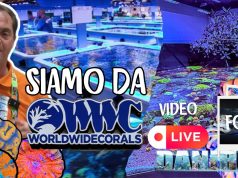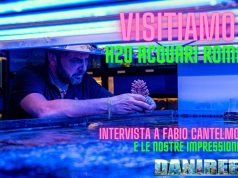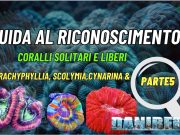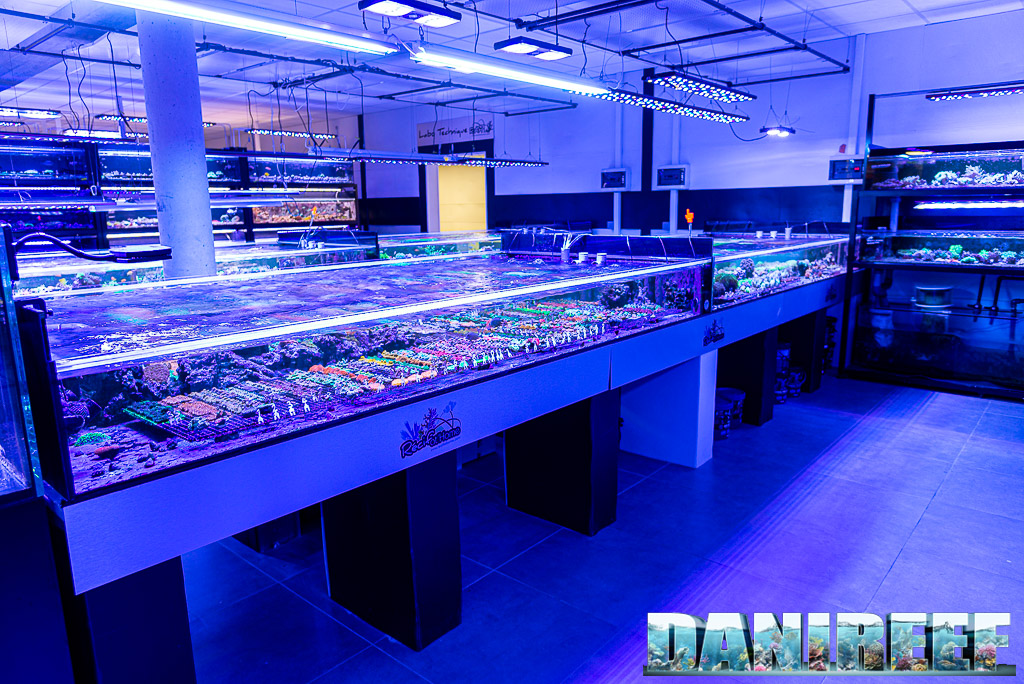
Recifathome is a Coral Farm that breeds and sells corals and fish. We visited the establishment and we were speechless. And it’s France’s most important! Now we know why.
This article is also available in: italiano
This enormous store is settled in Besançon. Halfway between Strasburgo and Lyons. We happened to be there because we had previously met Boris, co-owner of Recifathome, and Guillaume, at the Interzoo 2022. I had never seen a coral farm of these sizes before, and with such corals too! As I already said, I was completely speechless.
We spent the whole day at the farm speaking with the staff (very welcoming and nice), taking pictures and videos of the place and what it offers!
The store is inside a building of considerable size (1360 mq!) and the marine aquariums have a capacity of about 15.500 liters! There works a small army of 12 people. Recifathome sells online, but it’s also open to the public some days of the week, and we saw with our own eyes the queues of people that wanted to enter the store!
I, as you know, have already seen many stores, but nothing like this before. It’s a real show for any aquarist! The corals where the most beautiful thing to see, stunning, absolutely stunning, but the fish too were gorgeous and of the most varied species. And the technique! It was something incredible.
Also, we saw many Zebrasoma flavescens, and we know the price they reached in these months after Hawaii’s ban.
The video of our tour of Recifathome
Let’s begin with the video of our very first discovery of this Coral Farm. The video is pretty long, it can give you the idea of what we saw. Then make sure to come back and read the story and see the beautiful pictures of corals we took!
The video is in italian, but you can turn the English subs on! Enjoy!
But let’s start from the beginning.
We arrived at Recifathome on Tuesday night, having the plan to visit it leisurely on Friday. But we couldn’t resist and thanks to the great kindness of Boris Rota, co-owner with Mehdi Thabet, and Guillaume, that insisted on letting us in… and they surely didn’t have to beg us!
The shop is divided in five parts. A small one is dedicated to pets, another rather small one to freshwater aquarium, but the biggest one to marine aquariums. Then there’re the inventory with the products and the technical rooms, where they bag fish and corals and where there are the sumps, the skimmers and all the rest of the technical equipment.
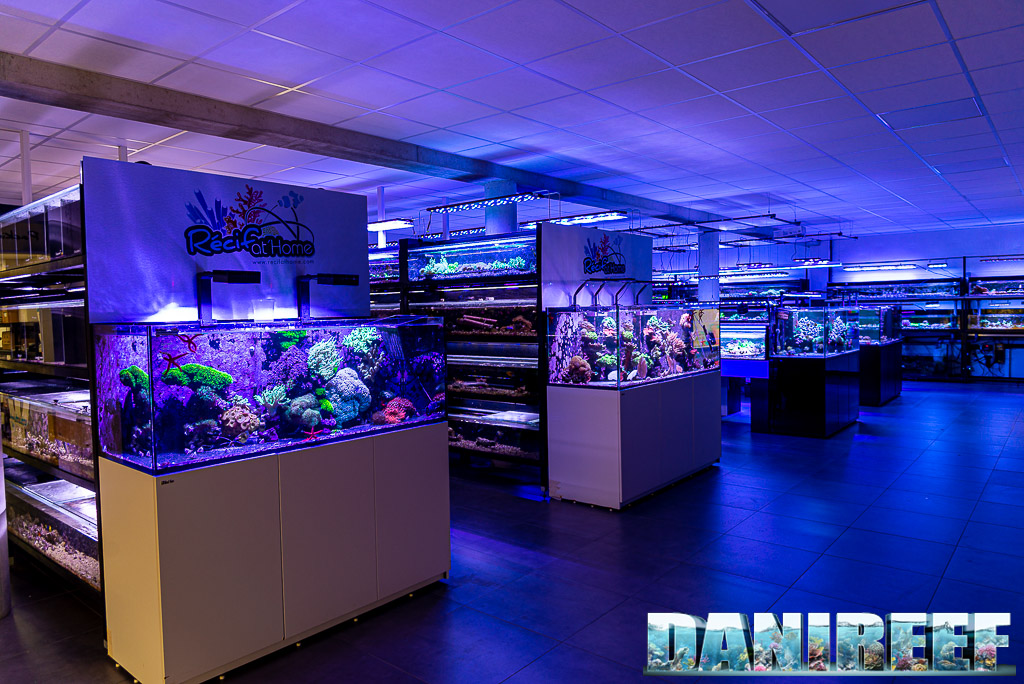
So, we had the opportunity to wonder inside this paradise undisturbed, ecorted by Boris and Guillaume that showed us the most curious things and introduced us to their system.
15.500 liters of salt water: here are the marine aquariums
These are all the liters dedicated to marine aquarium. They’re divided in display tanks, fish and corals exhibitors, which are obviously distincted in order to avoid that the parasites on new corals may infect already quarantined corals, ready to be sold. We’re speaking of a surface of 70 square meters with a water height of 25 cm. It’s divided like this:
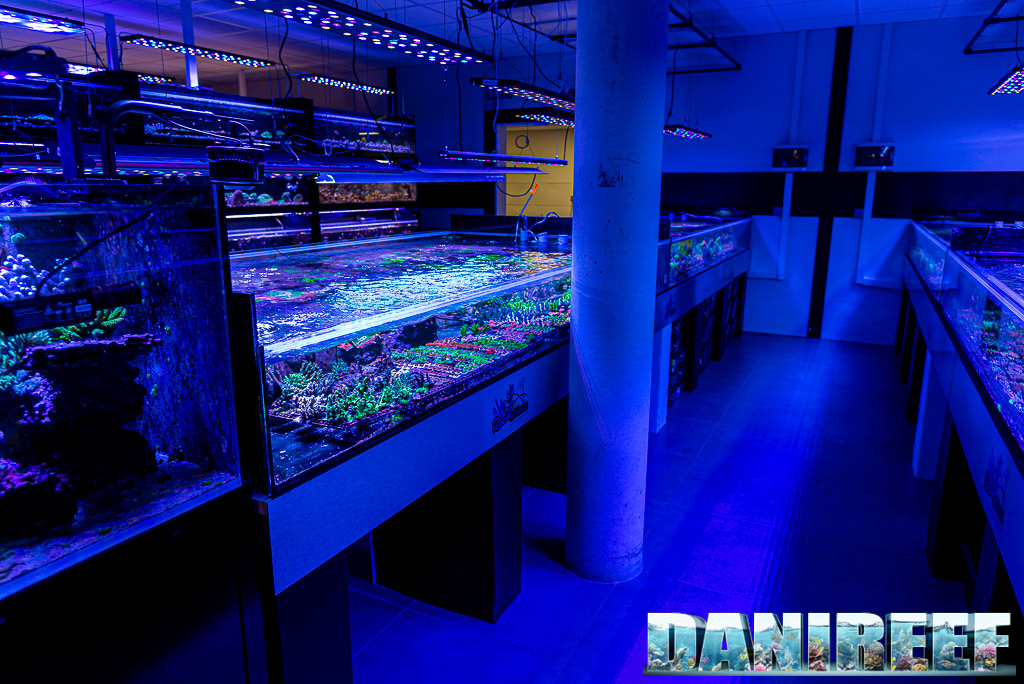

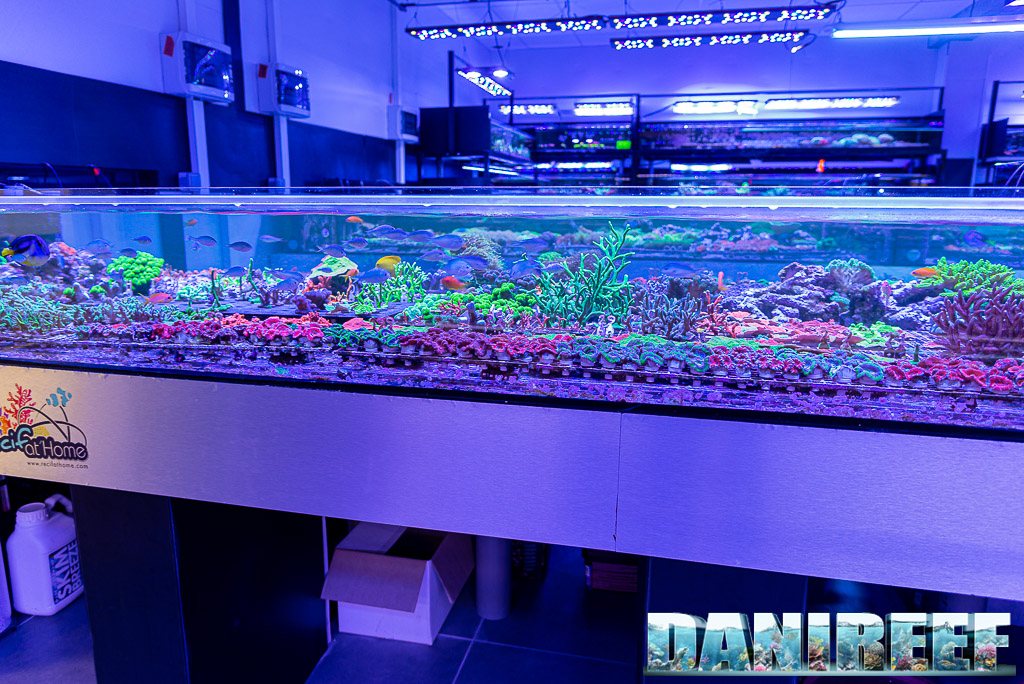
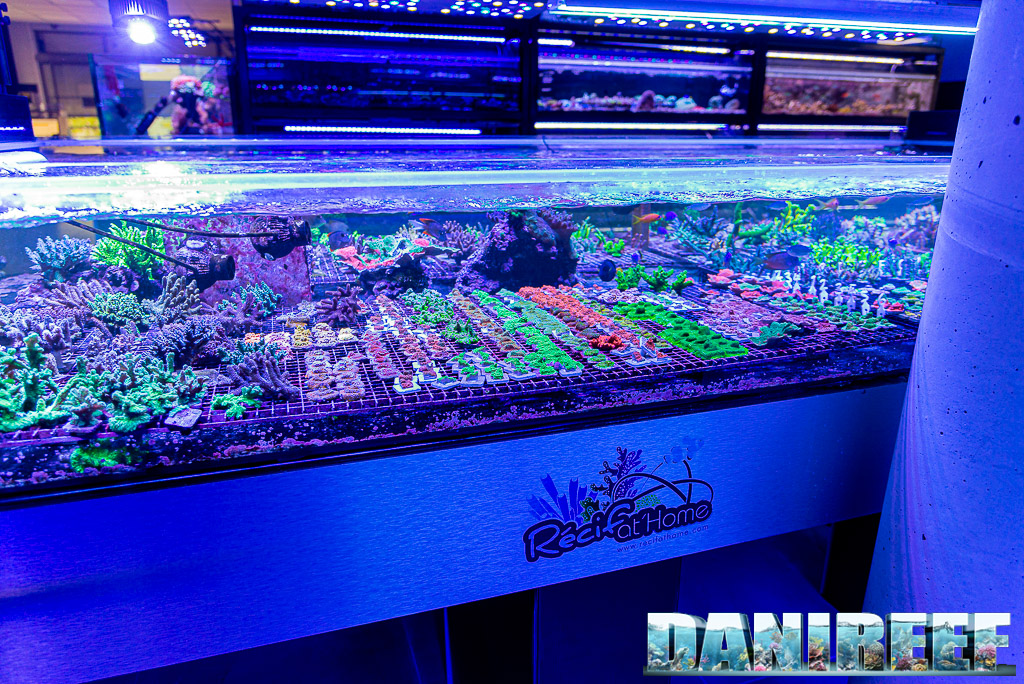
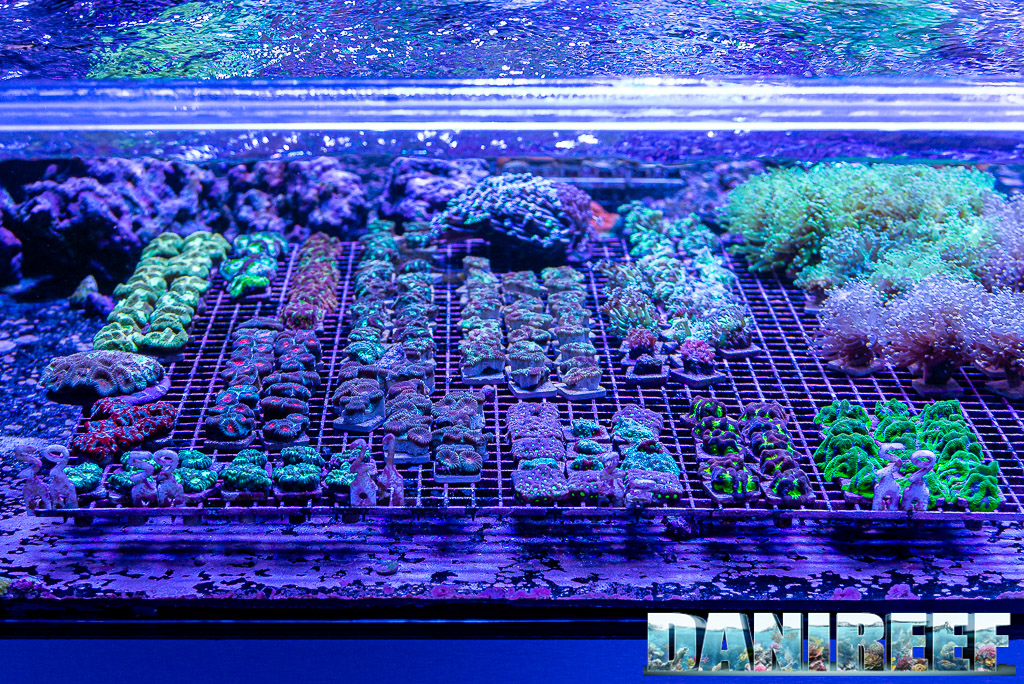
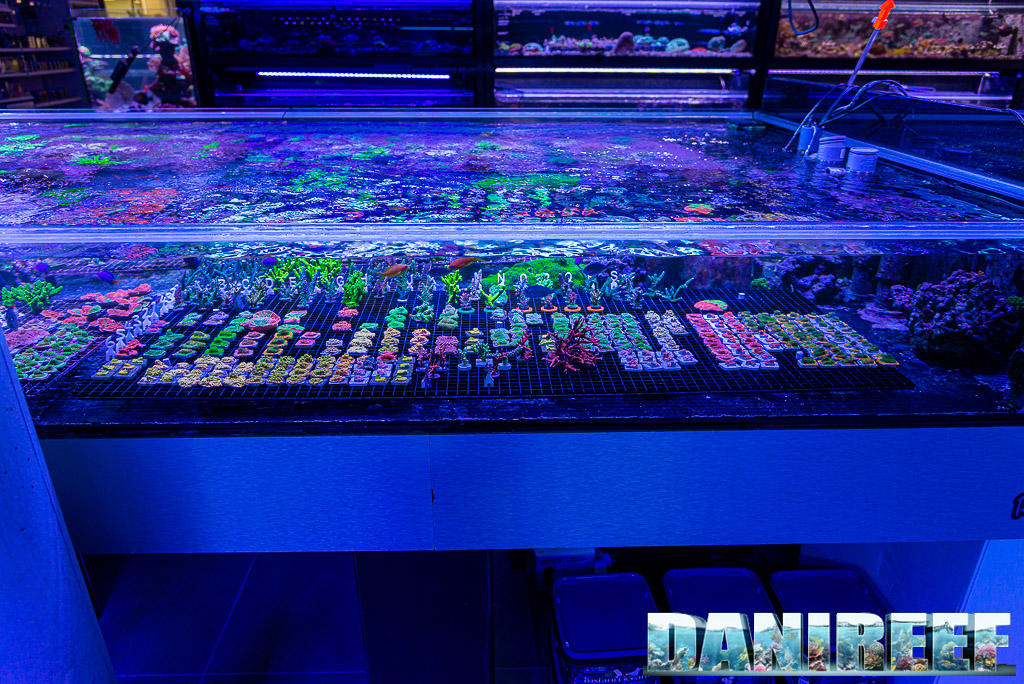
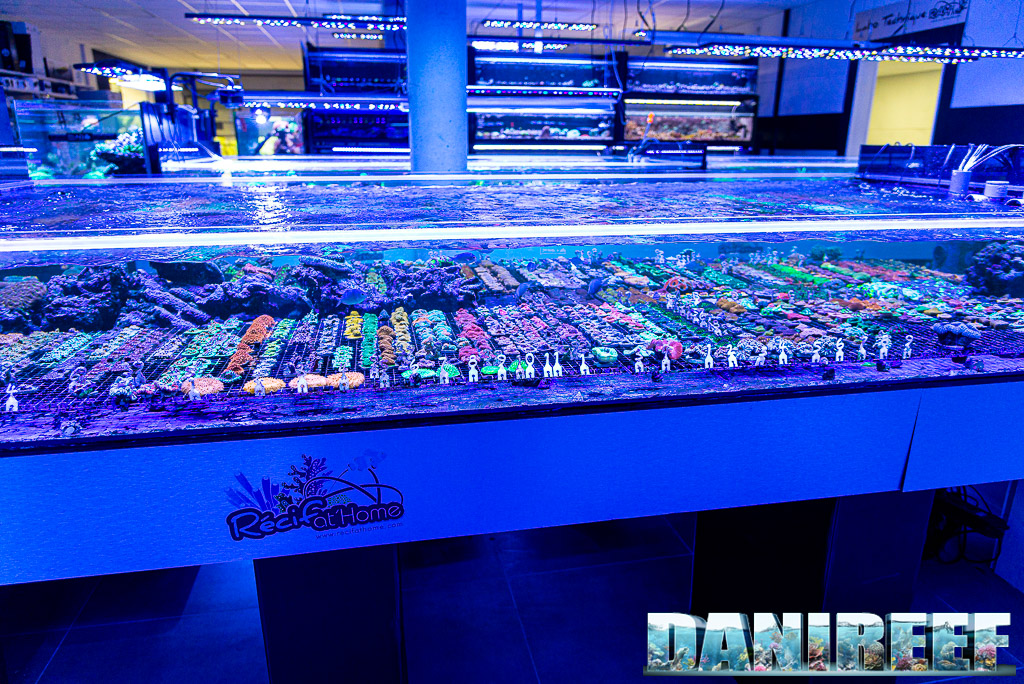
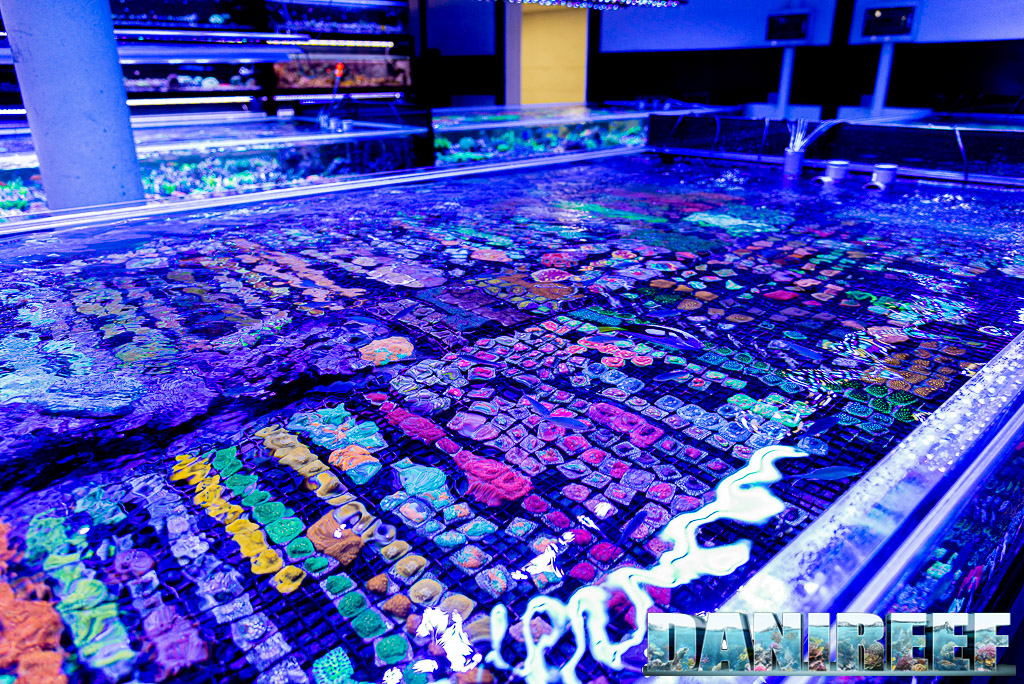
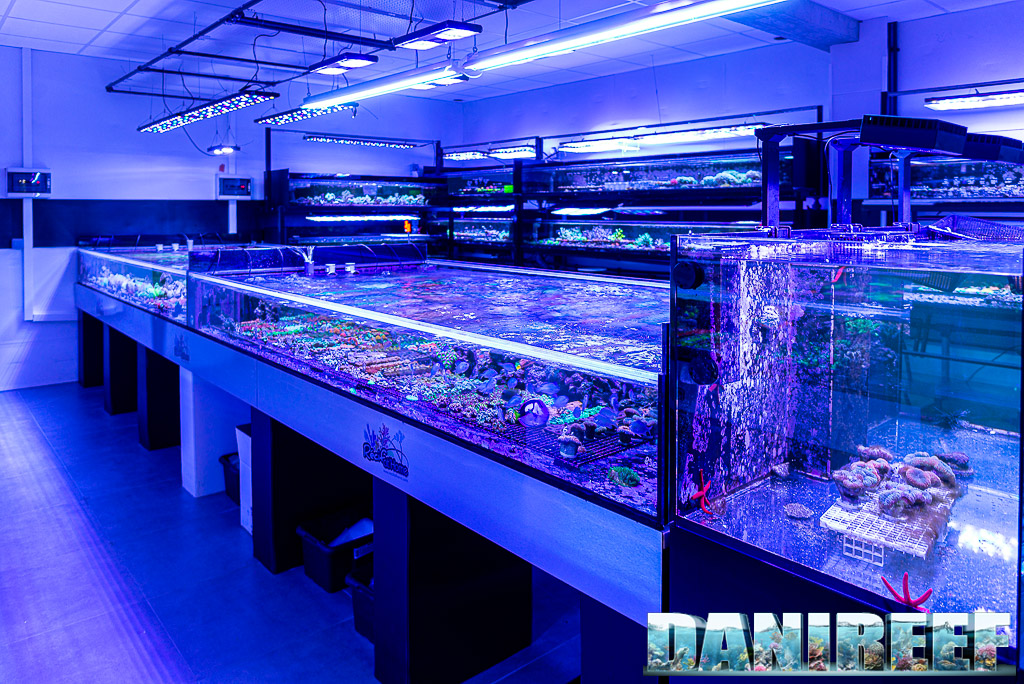
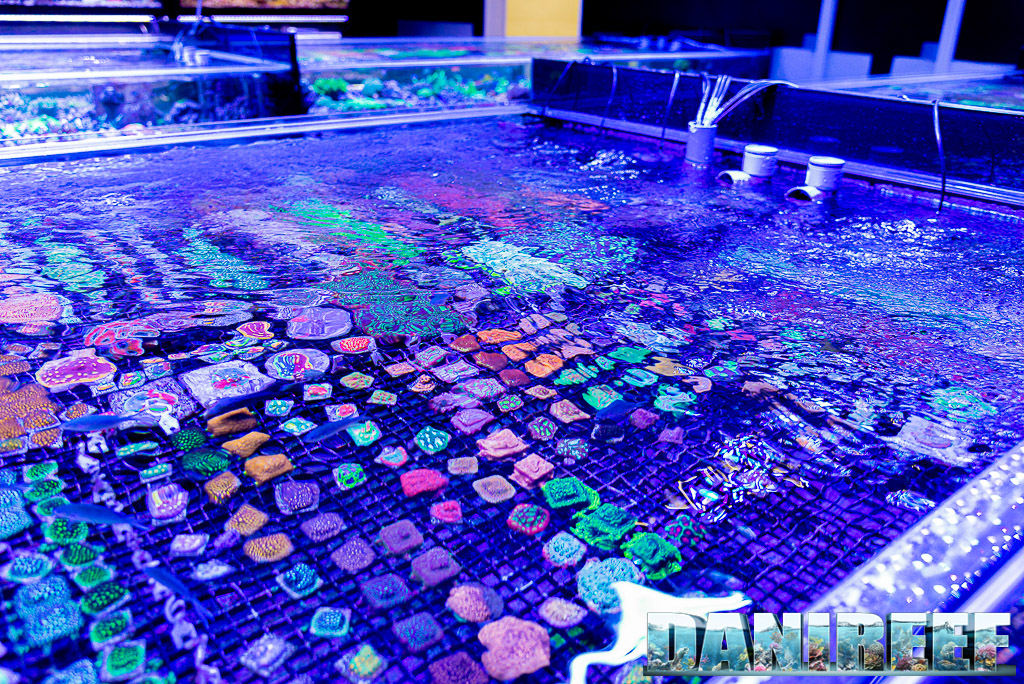
There are two main structures of 3.000 liters, the most scenic, that host hard corals SPS and LPS. Sure, in these tanks there were also some fishes, but they weren’t the main attraction. In fact, here are hosted the most beautiful corals.
There were another two structures of 1.500 liters dedicated to corals, the ones that ran through the external wall, even these divided in another two levels. Then there was the tank hosting fish, with 6.000 liters of capacity, divided in two levels. Finally, an aquarium of 500 liters.
As benefits a store like this, the cleanliness is impeccable. The aquariums were kept even better than the ones we have at home. It’s obvious that they are treated with a lot of attention and care. It rarely happened to me, unfortunately, to see such well kept stores, with this level of cleanliness. And this also makes the difference.
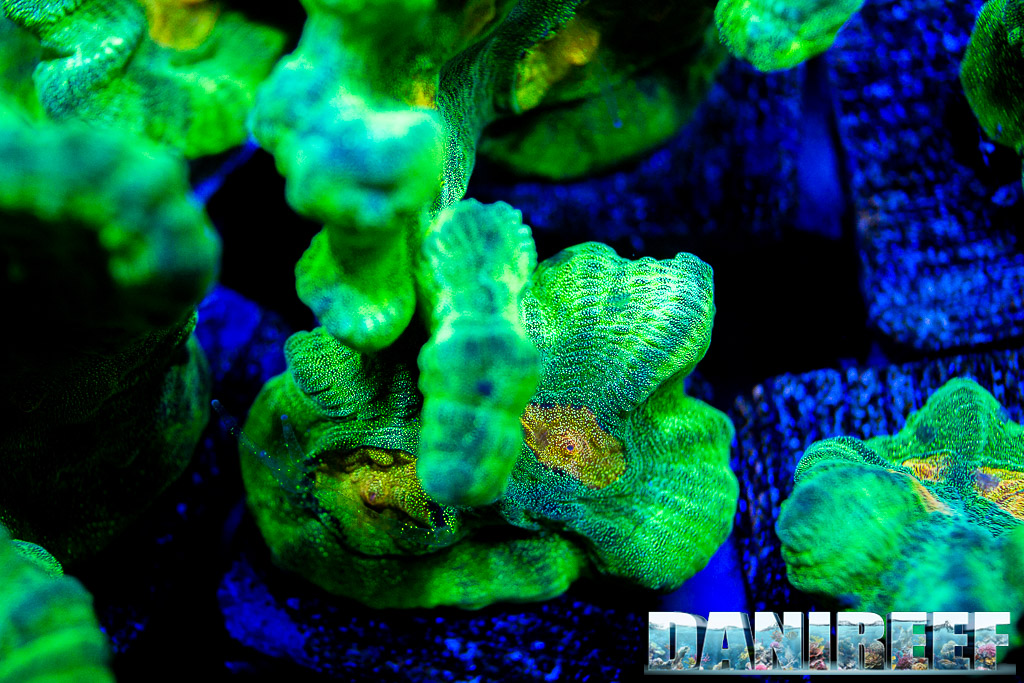
Feeding corals: yes or no?
We, as our readers know, always believed in a specific feeding for corals. If you read our article about coral feeding (in italian) you can understand our position and make up your mind. So, one of the first thing we asked to Recifathome‘s staff was to clarify if and how they feed their corals. And the answer didn’t surprise us! They use their own mix that administer once a day at noon. The feed is frozen and is made of white fish, shrimps, spirulina, oysters, mussels and Reef Roids by Polyp Lab. It’s a really complete food that fulfills every need of the coral.
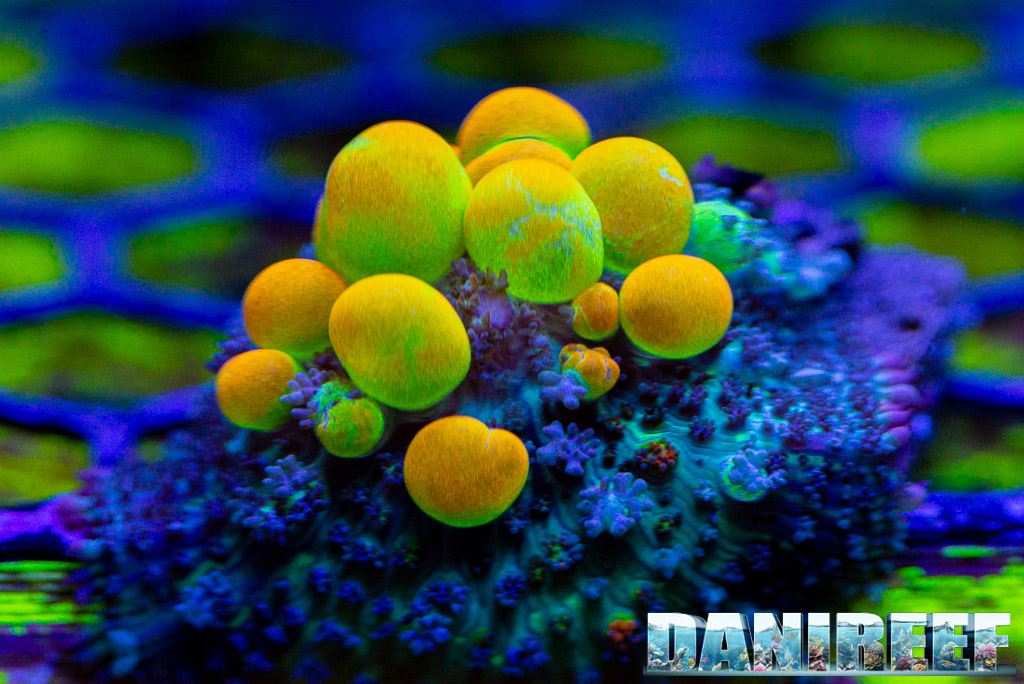
PAR and corals: more than a symbiotic relationship
The other curiosity we had was to know the kind of lighting they destined to the corals. This aspect usually falls in the background, and it can lead to mistakes in both ways: sometimes we give too much light to corals that would rather do without (we wrote an article about – “The Light in nature, comparisons with the lighting in our aquariums“), or other times we give too little light to very demanding corals, like Acropora. No wonder why sometimes we don’t obtain the results we want.
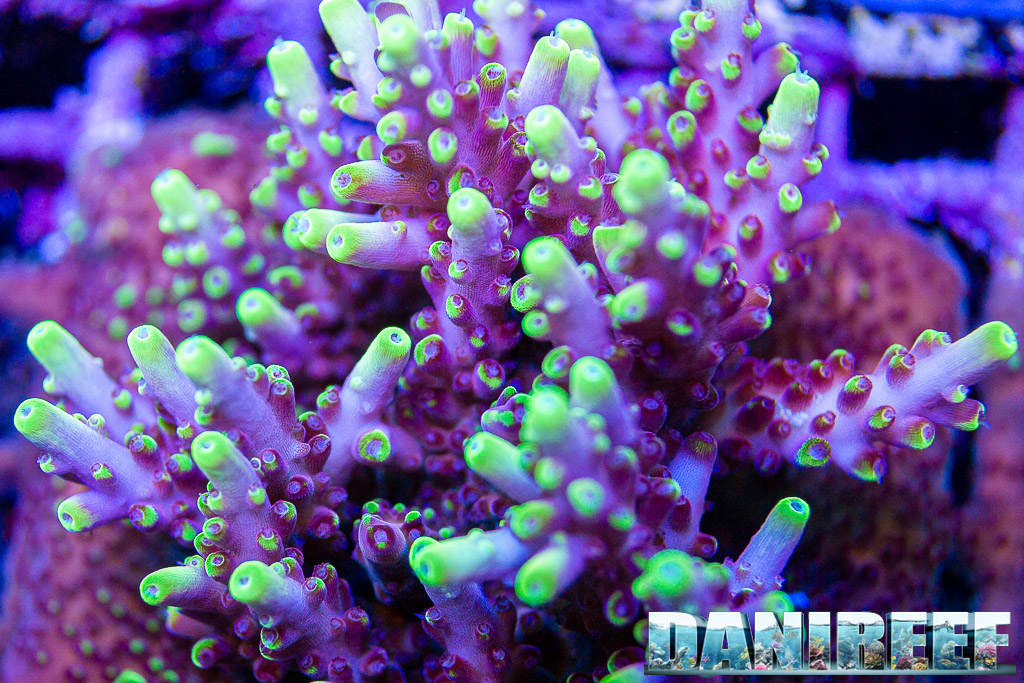
At Recifathome‘s the light is managed differently for each tank. The Acropora, like the beautiful Fox Flame of the previous picture, are kept under a range between 300 and 650 µmol m-2 s-1, depending on the origin and the kind of the corals. All the other SPS, among which the wonderful Montipora have 250 µmol m-2 s-1. The LPS are between 80 and 150 µmol m-2 s-1.
This says two things. The first, that we have to know the light output we provide to our corals, the second is that it has to be the right one. For this reason, as you know, we always measure the PAR of every ceiling light we test in our DaniReef LAB, and if we combine what we measured in our tests and what Recifathome told us, we can adjust the light for what the corals need.
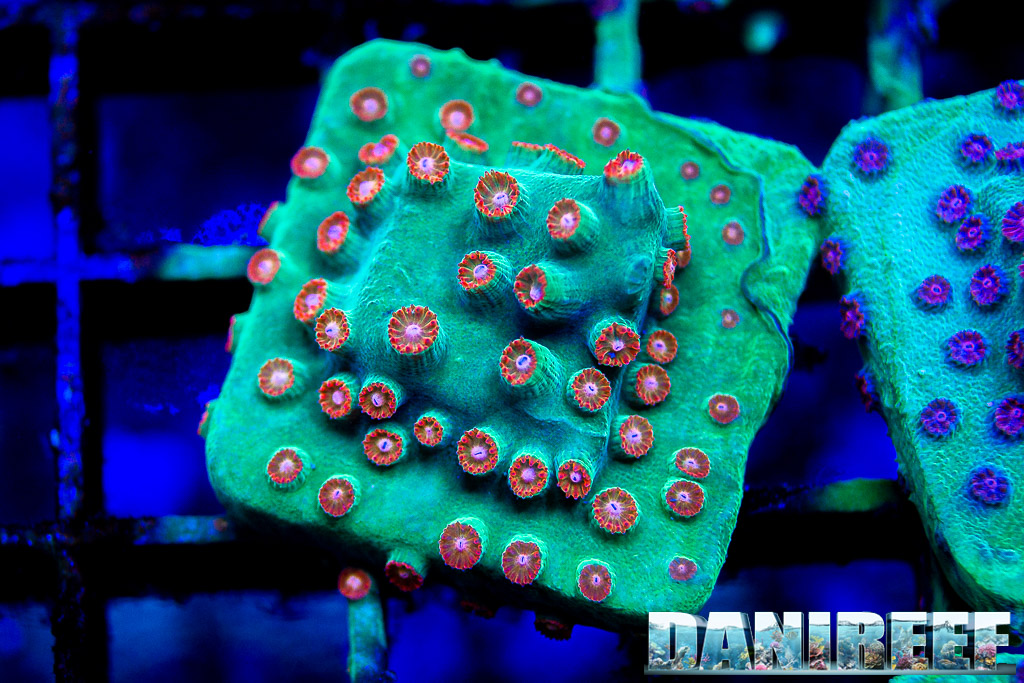
And the water values?
Another aspect that intrigued us were the values of the water of the aquariums. We can take them as a reference for our own. Usually the standard values are the following ones:
- KH: 8.3;
- Calcium: 450 mg/l;
- Magnesium: 1400 mg/l;
- PO4: 0.03 mg/l;
- NO3: 5 mg/l;
- Density: 1,025 g/dm3 at 25° C;
- Temperature: 25 degrees;
Exactly, the nitrates aren’t zero, but 5 ppm. And notice the nitrates and phosphates ratio: 5/0,03, 1 to 167, very far from the theories of the Redfield Ratio (we wrote an in-depth article about). Yes, according to me, the Redfield Ratio is a wrong way to consider the levels of nitrates and phosphates.
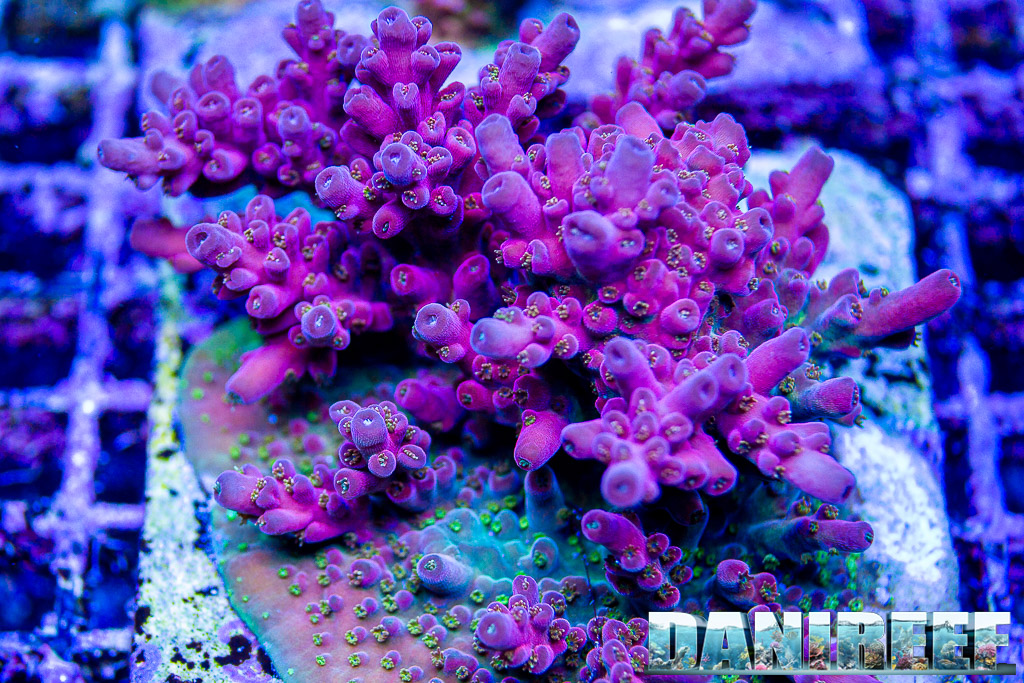
In fish tanks are also hosted some corals, even if it’s much more complicated to keep the right values, both for their health and their colors. For this reason, even though the use of sulfur denitrators, the values are slightly higher, with the phosphates between 0,05 and 0,08 mg/l and the nitrates between 5 and 10 mg/l.
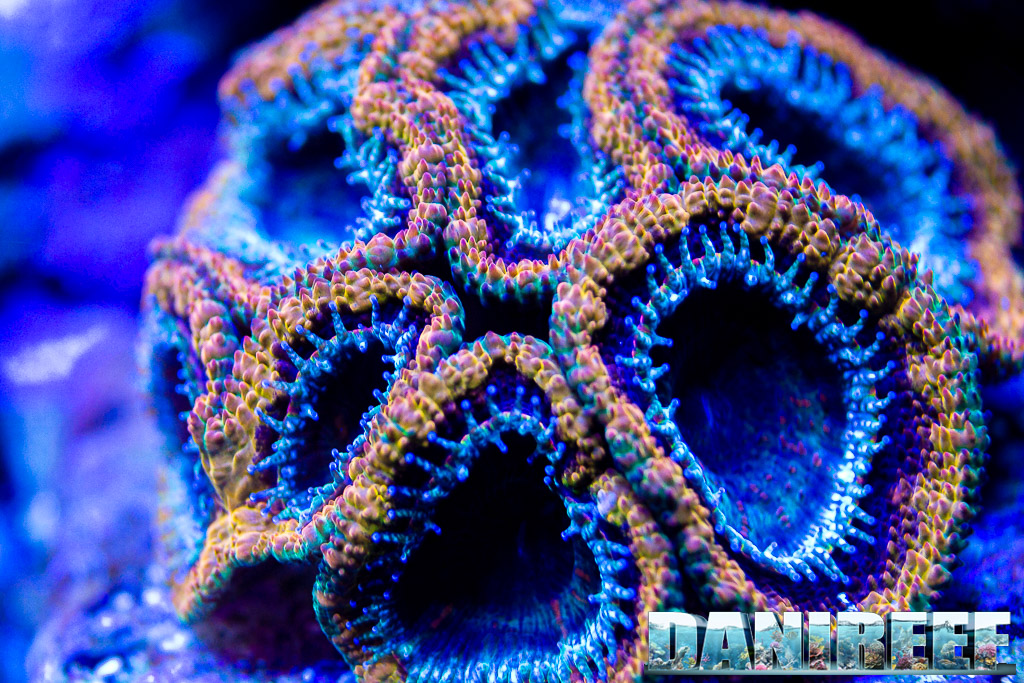
How fish and corals are treated when they arrive
Each coral arrived at the farm is treated many times with Coral Protec by DVH Aquatic to prevent it from having any parasites and that could harm it or transfer to other corals.
If the corals has a certain importance, and at Recifathome‘s they want to breed it, there’s a protocol of 8 months that goes through 6 different phases, that comprehend the thorough inspection of the coral, parasites prevention dips, change of structure with corals that have followed the same process, then again dips and inspection, and after 8 months the corals is ready to be breed.
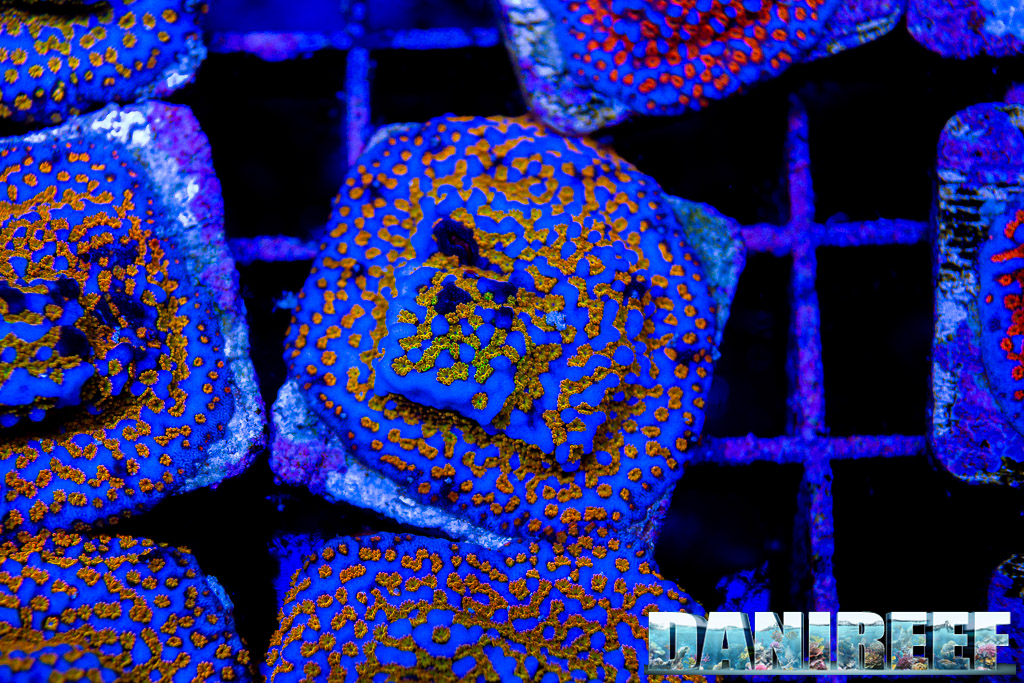
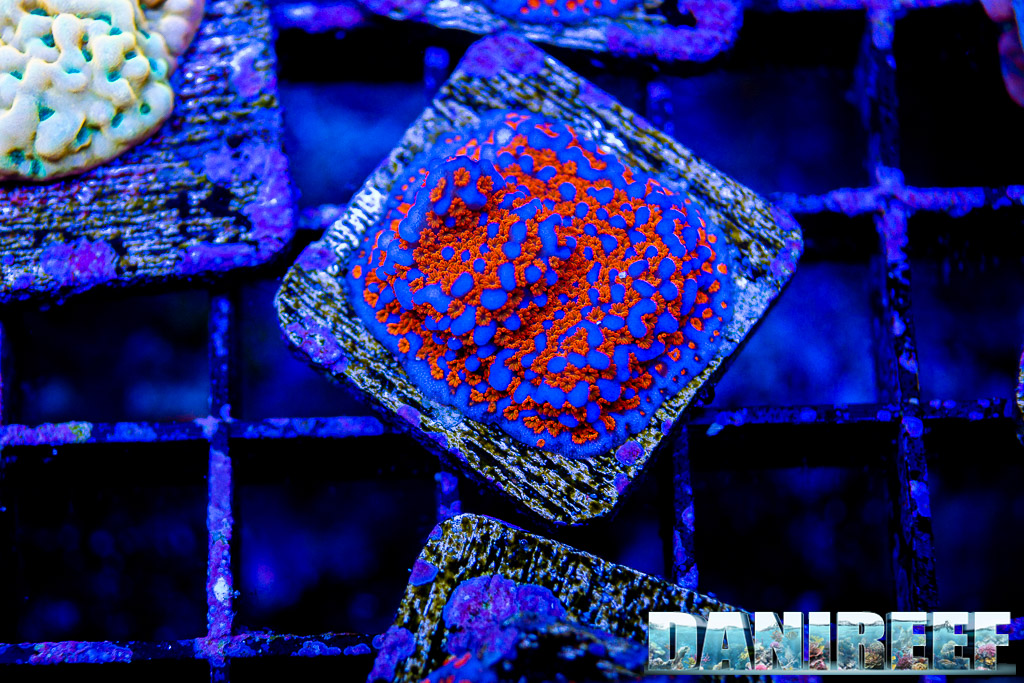
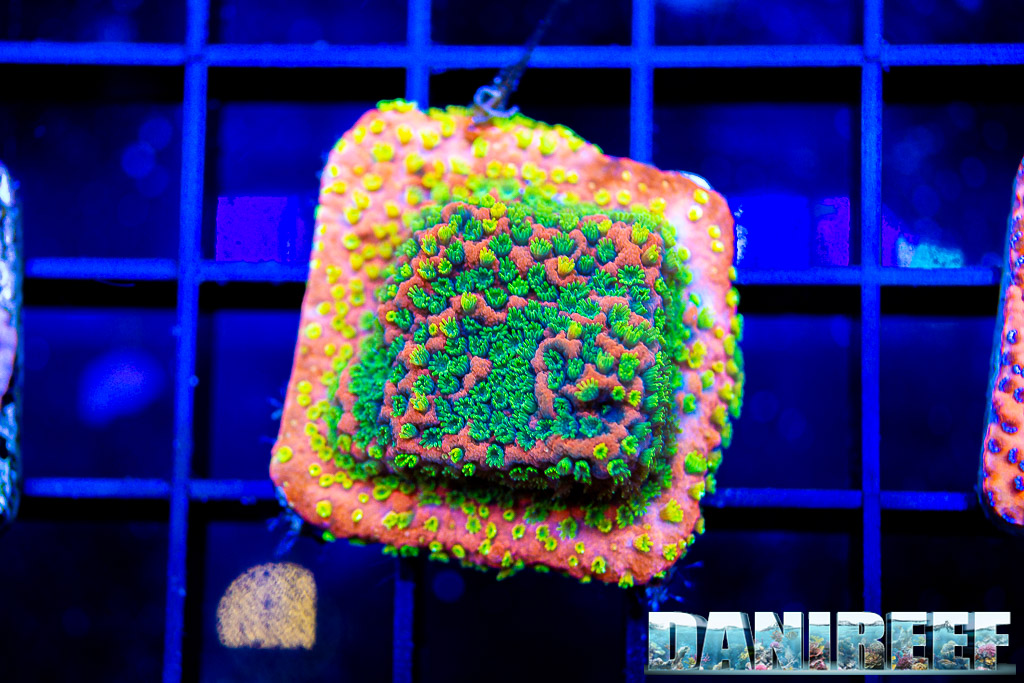
The corals that risk the most a bacterial infection, like the Euphyllia, the Micromussa (those who used to be called Acantastree), thr Cynarina, etc, are treated apart precisely to avoid this problem.
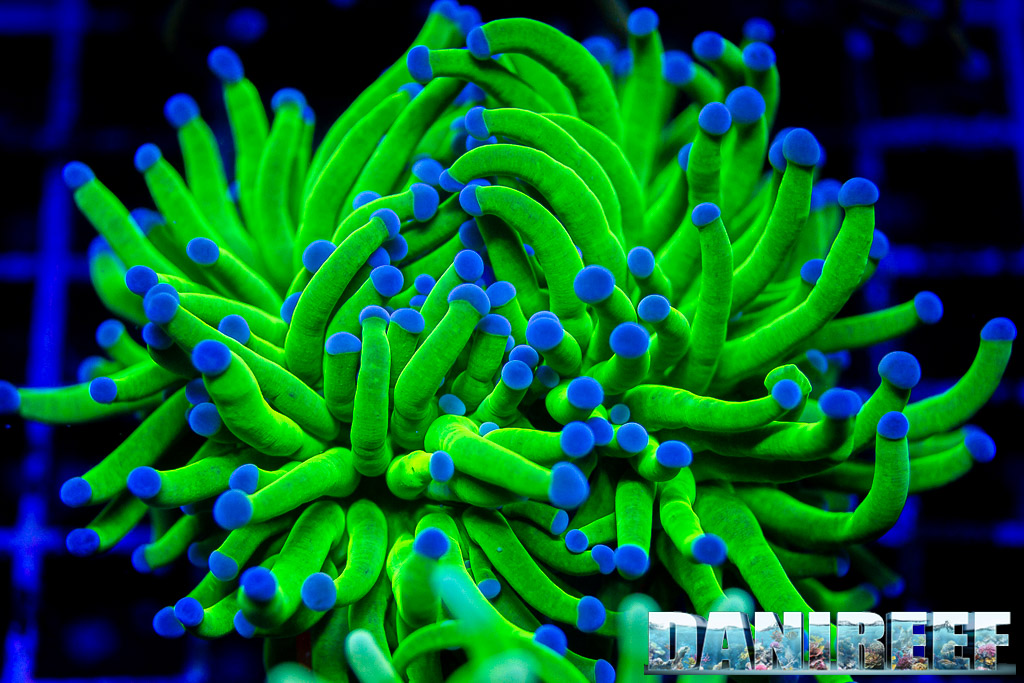
It’s absolutely incredible how much work there’s behind the health of these animals, and we have to do our best congratulations to Recifathome for how they manage every aspect.
And fish?
A big part of the Coral Farm is dedicated to fish. You can see them in our video, but here we wanted to remind you that a huge proportion of fish are farmed, either internally, meaning that they are born in the tanks, and externally, thanks to the collaboration with many suppliers, like MERS, ACDP, Bali Aquarich, Biota and Proaquatix.
The list of farmed fish is incredibly long. Among the ones we liked the most, there were the many Zebrasoma flavescens from Biota.
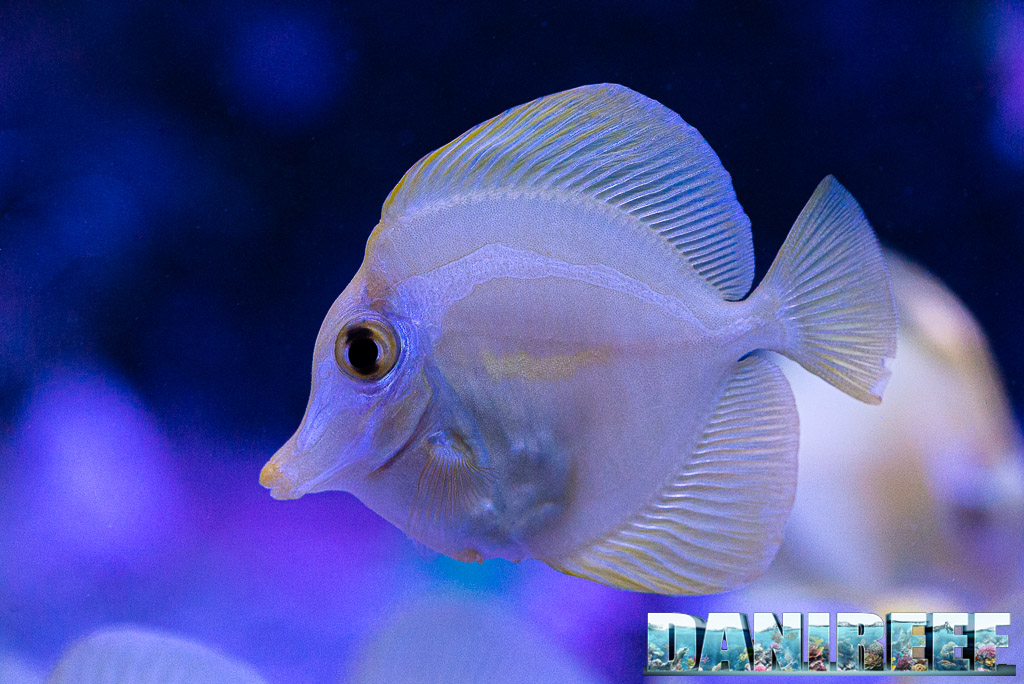
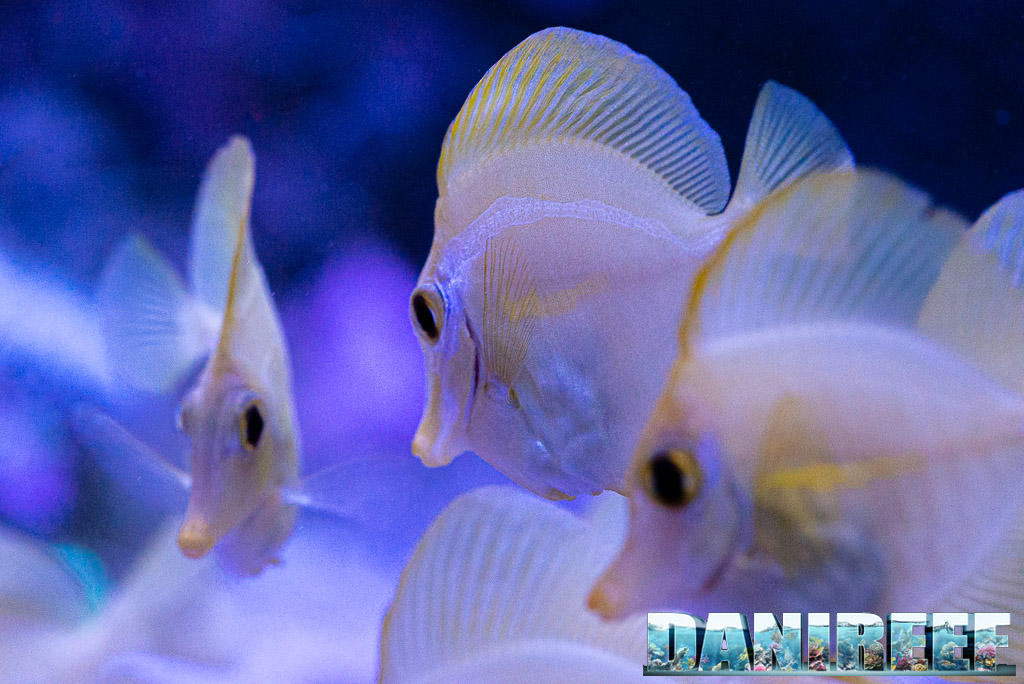
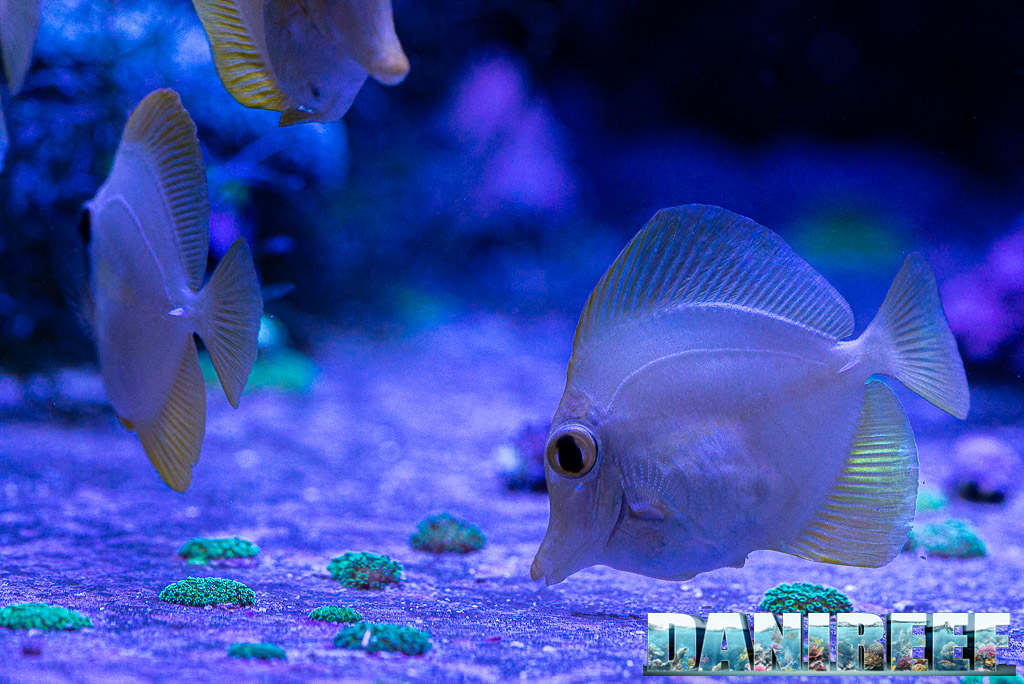
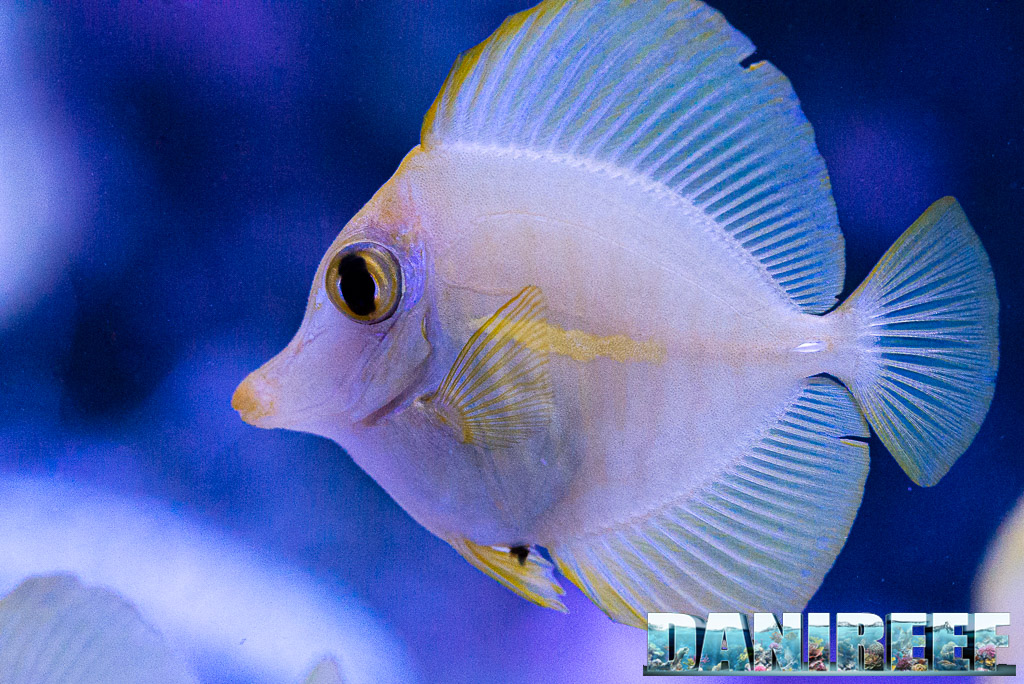
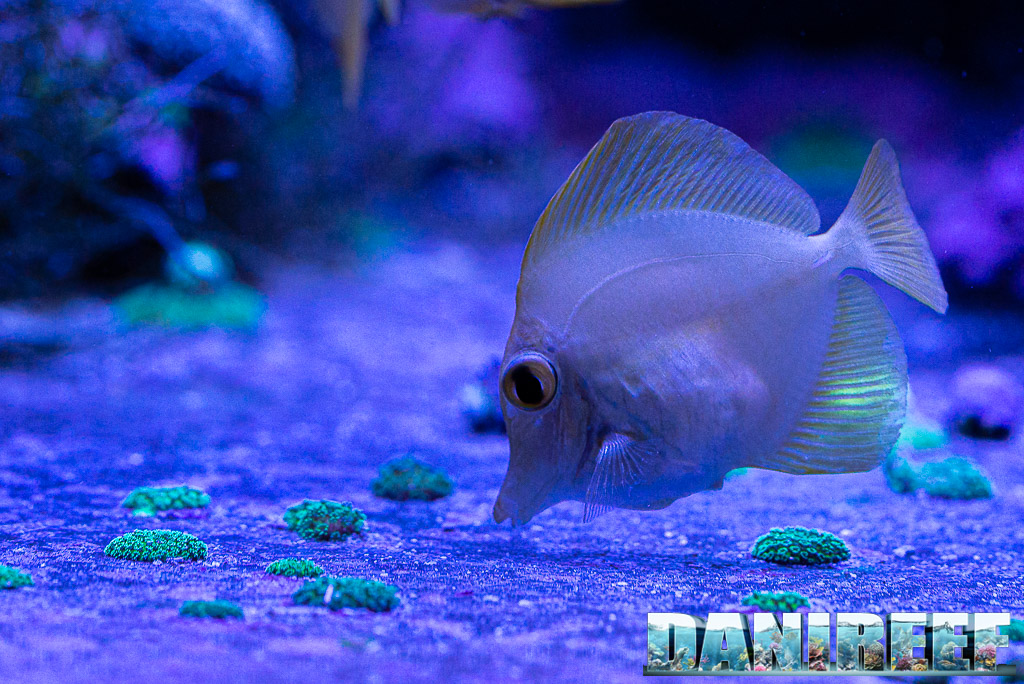
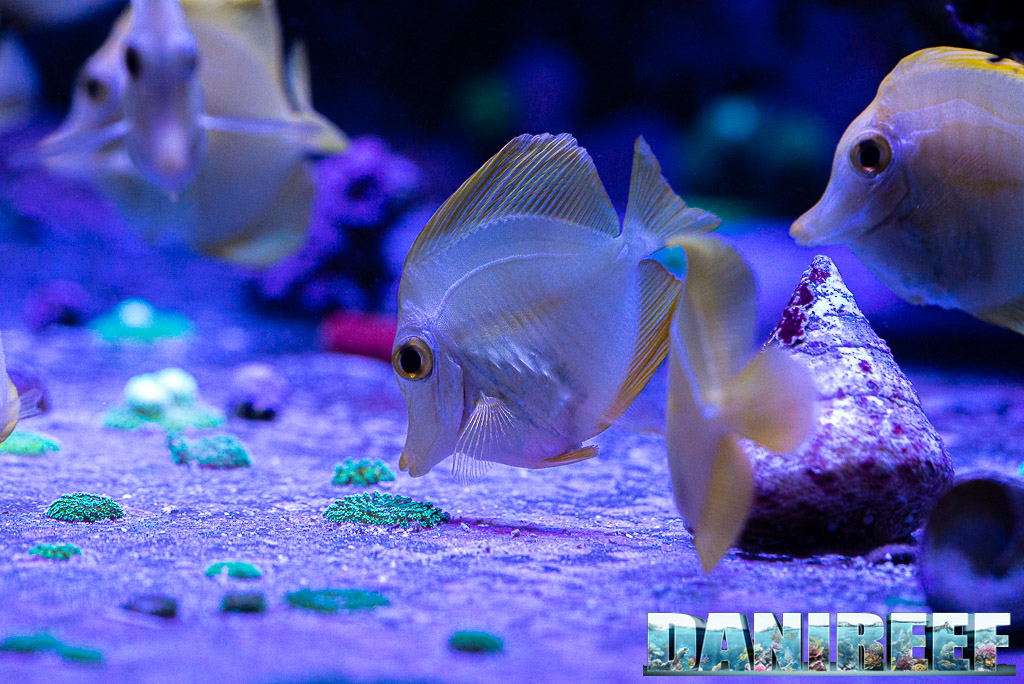
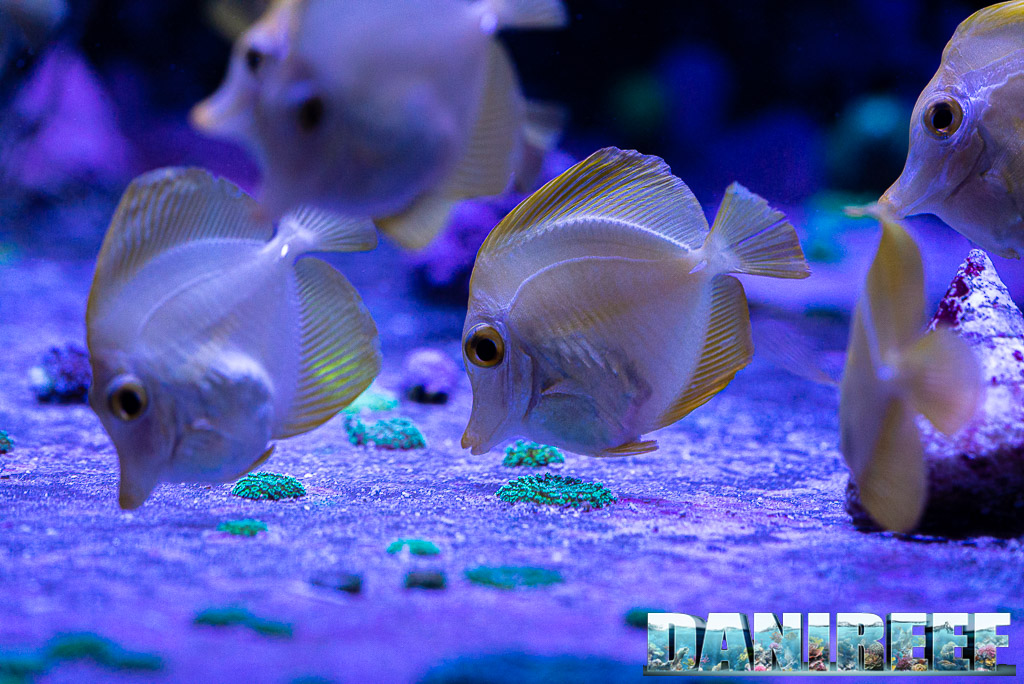
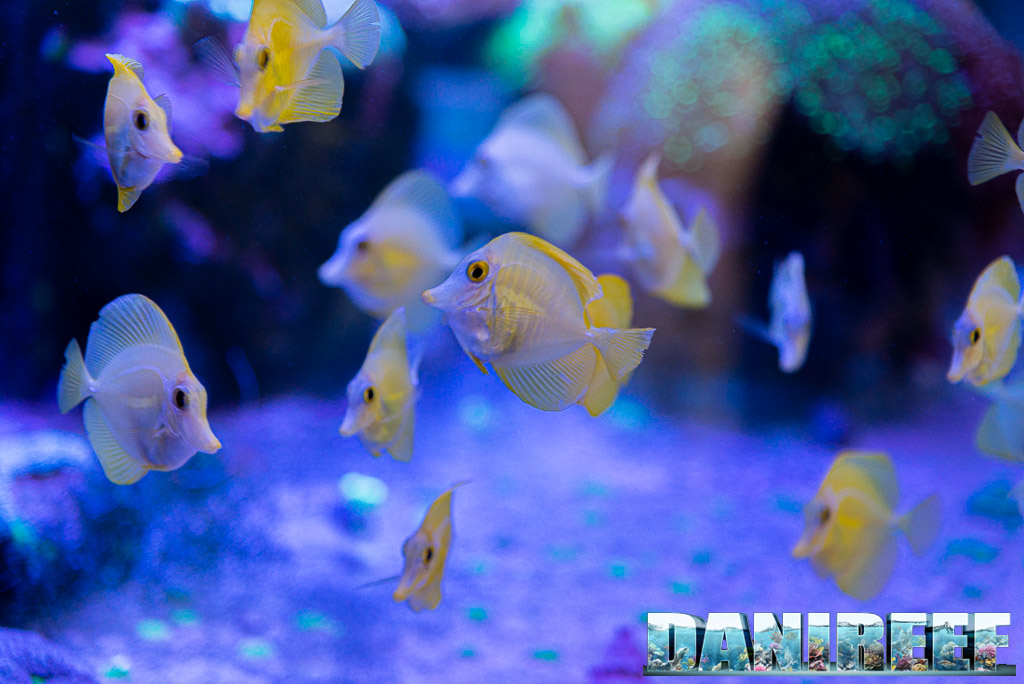
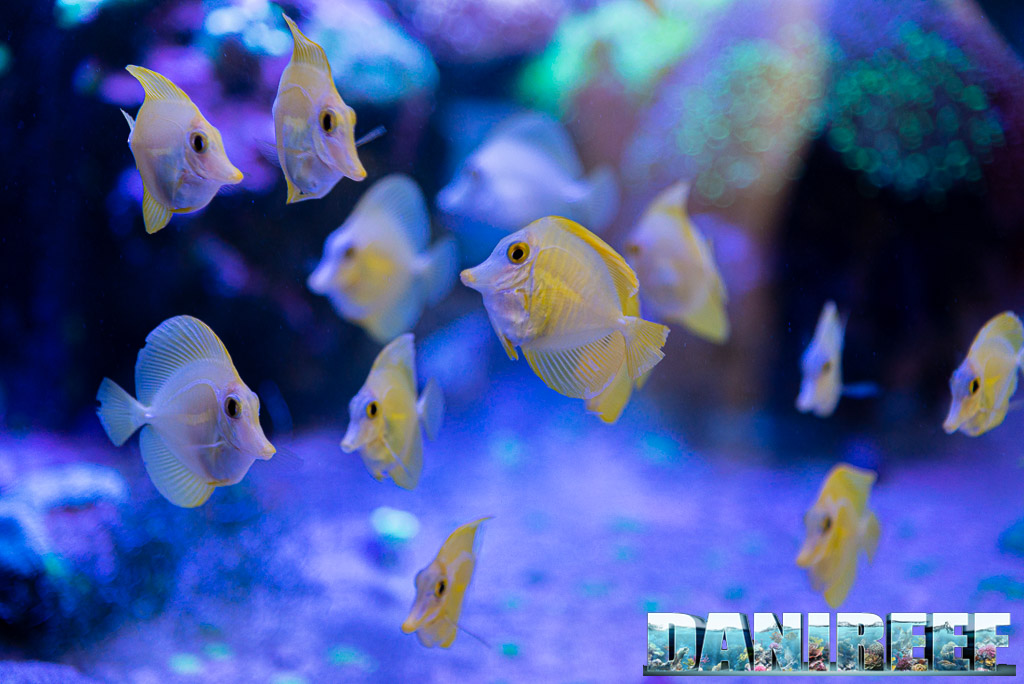
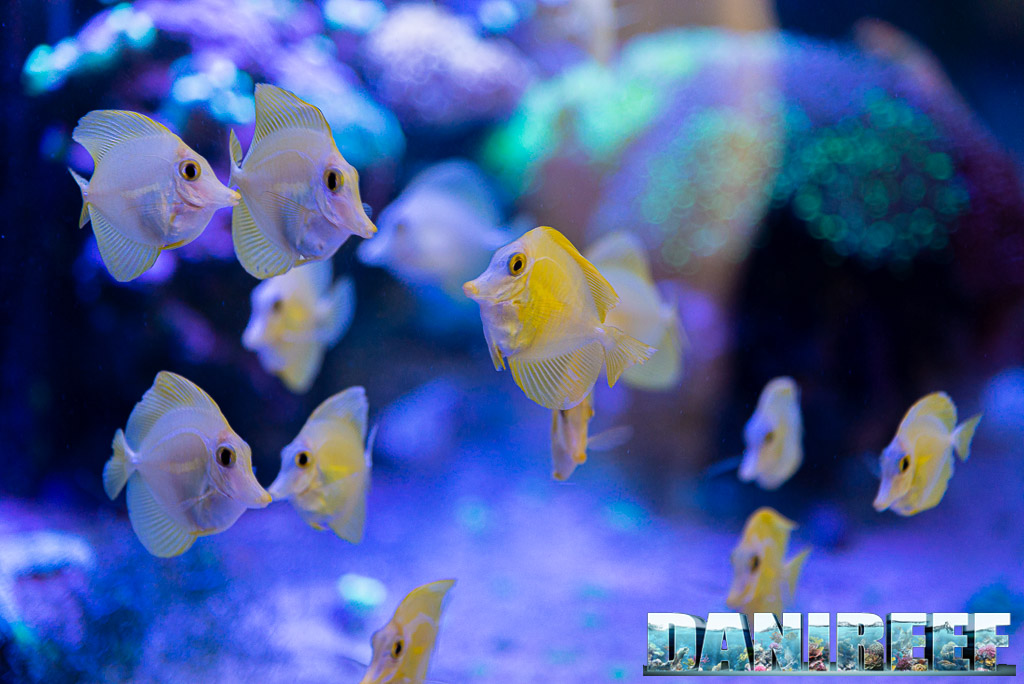
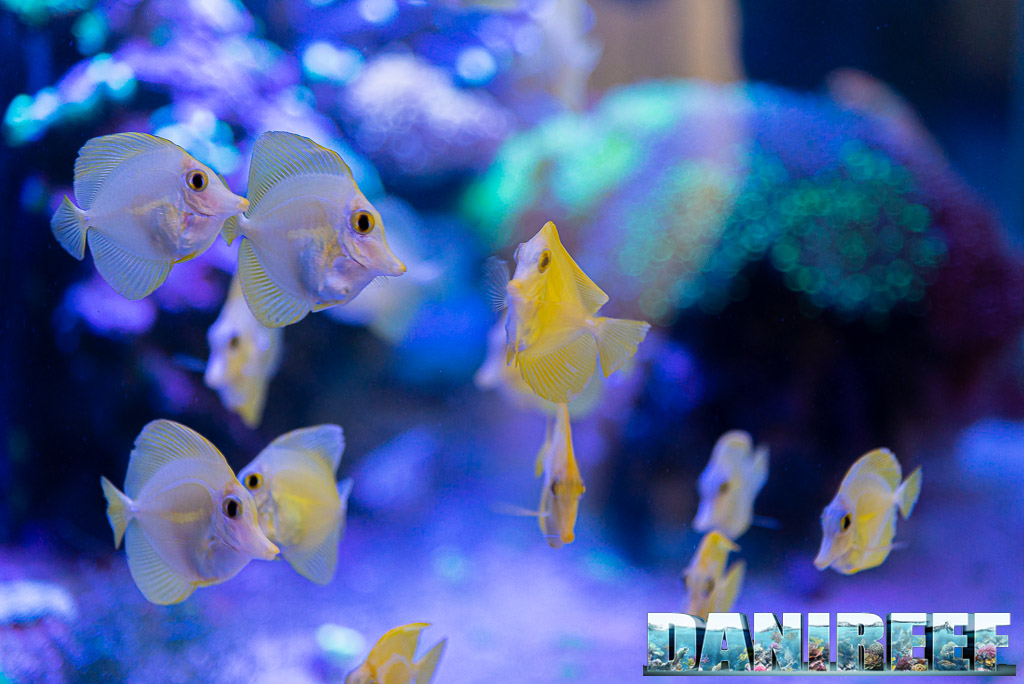
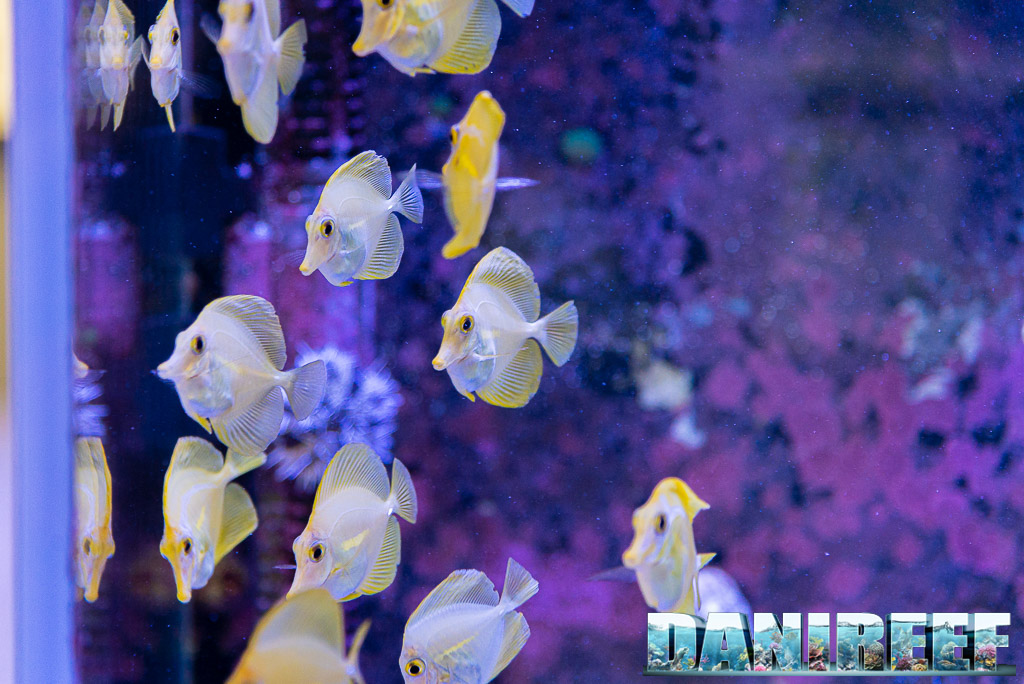
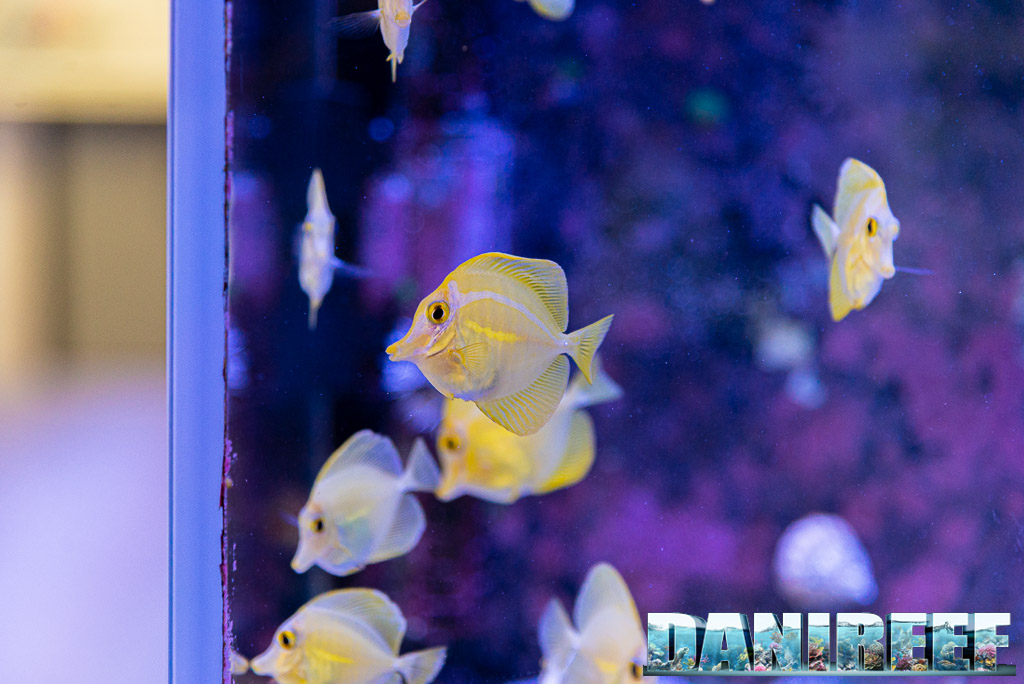
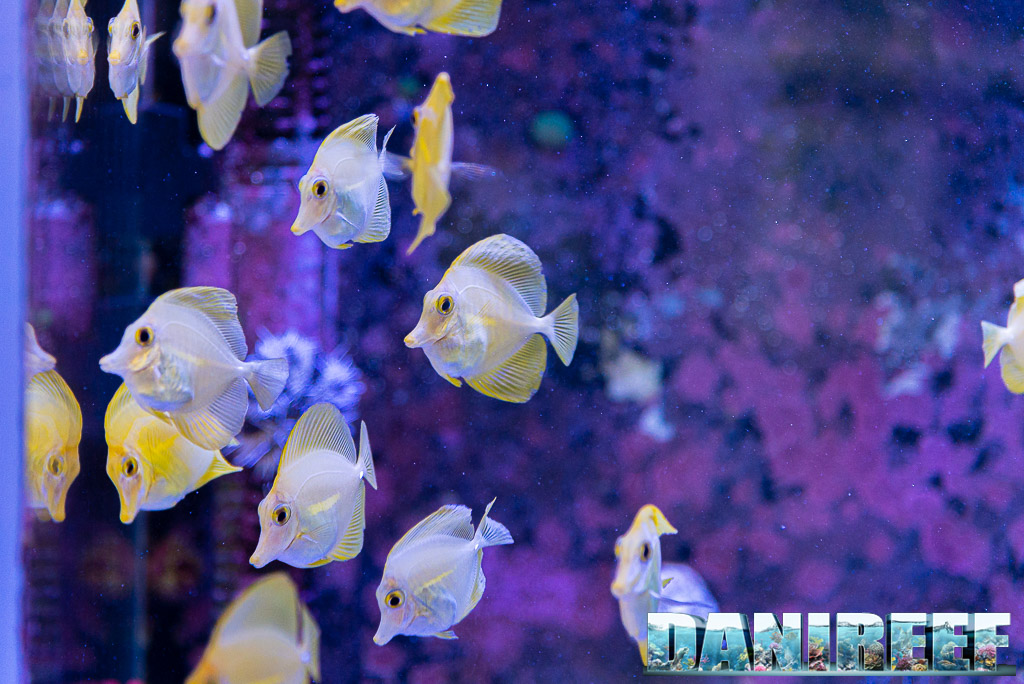
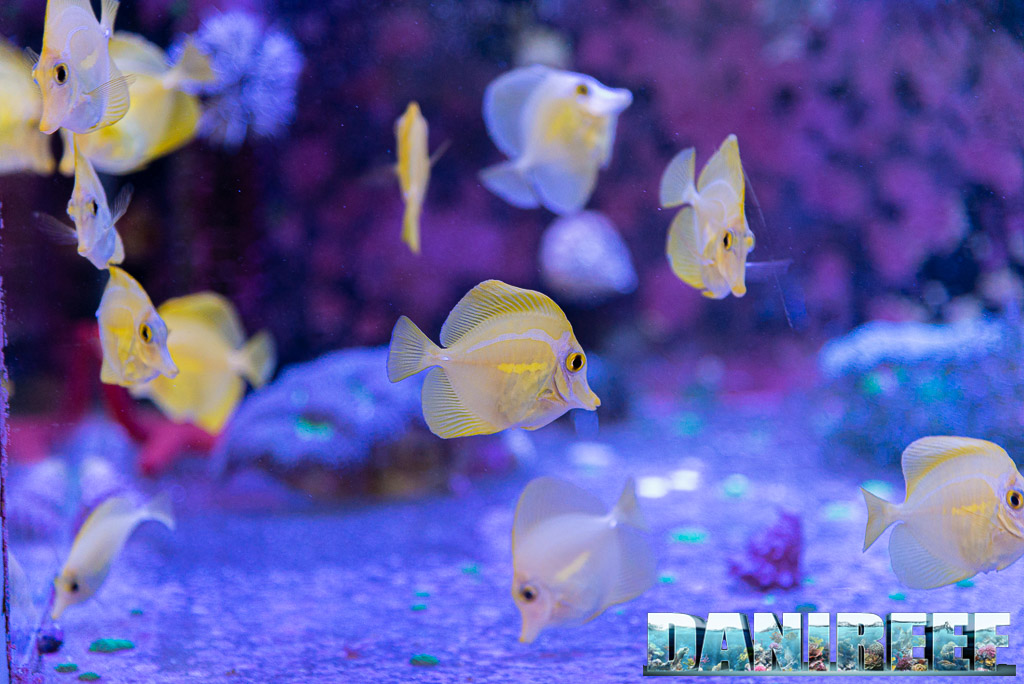
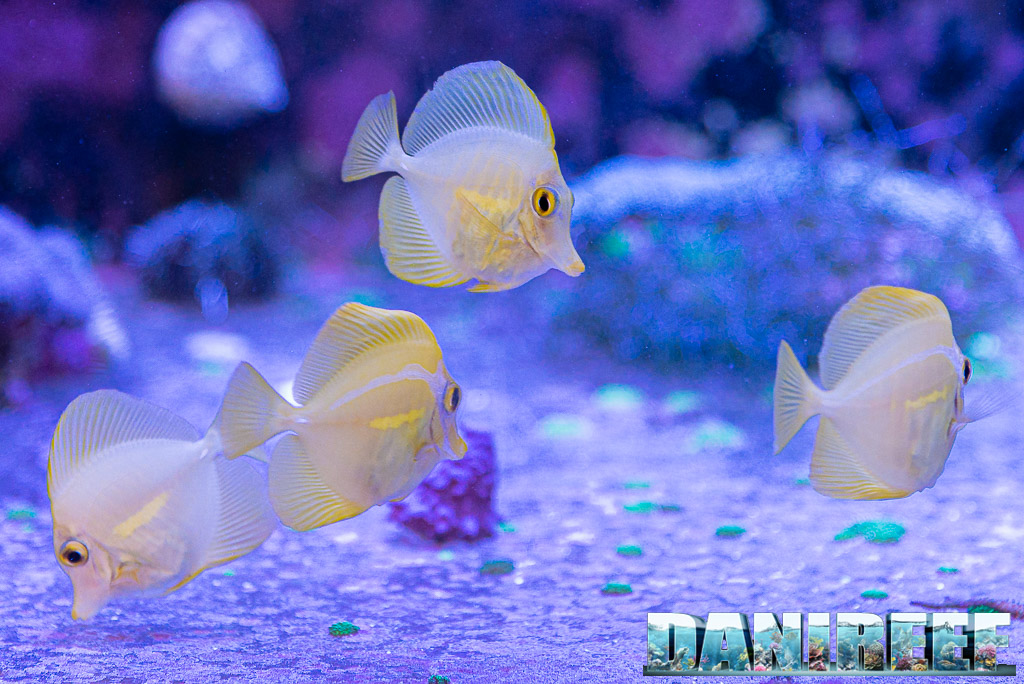
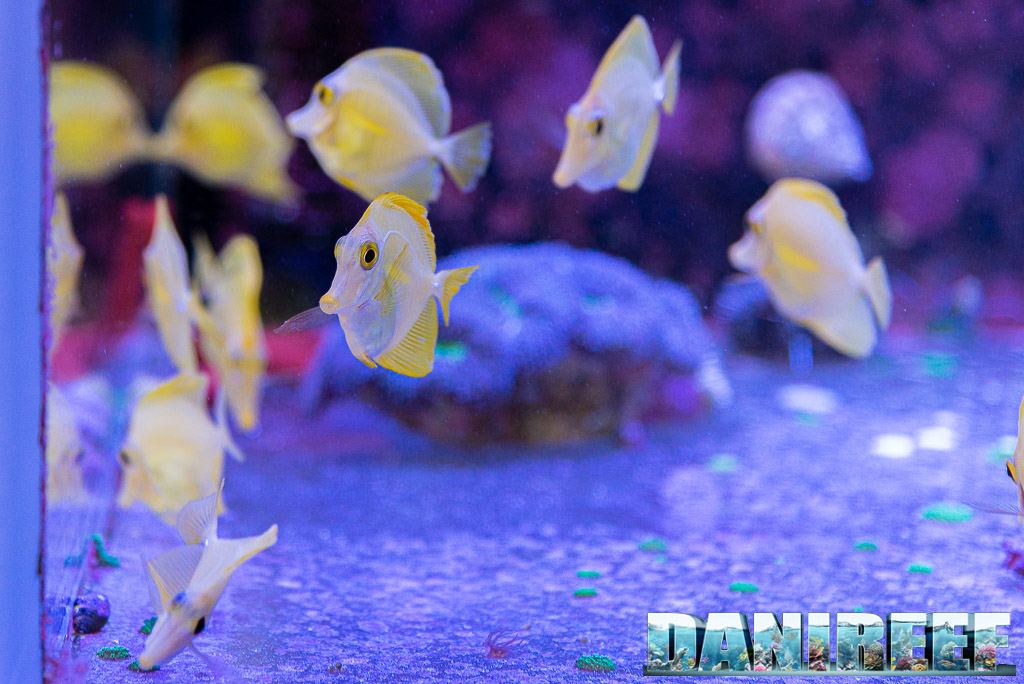
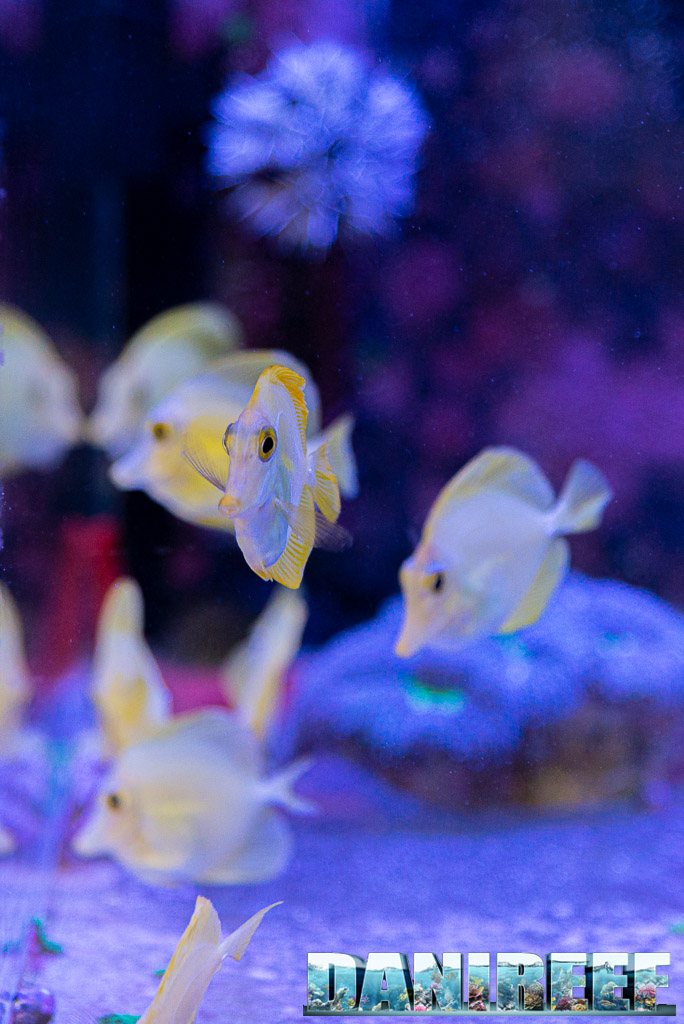
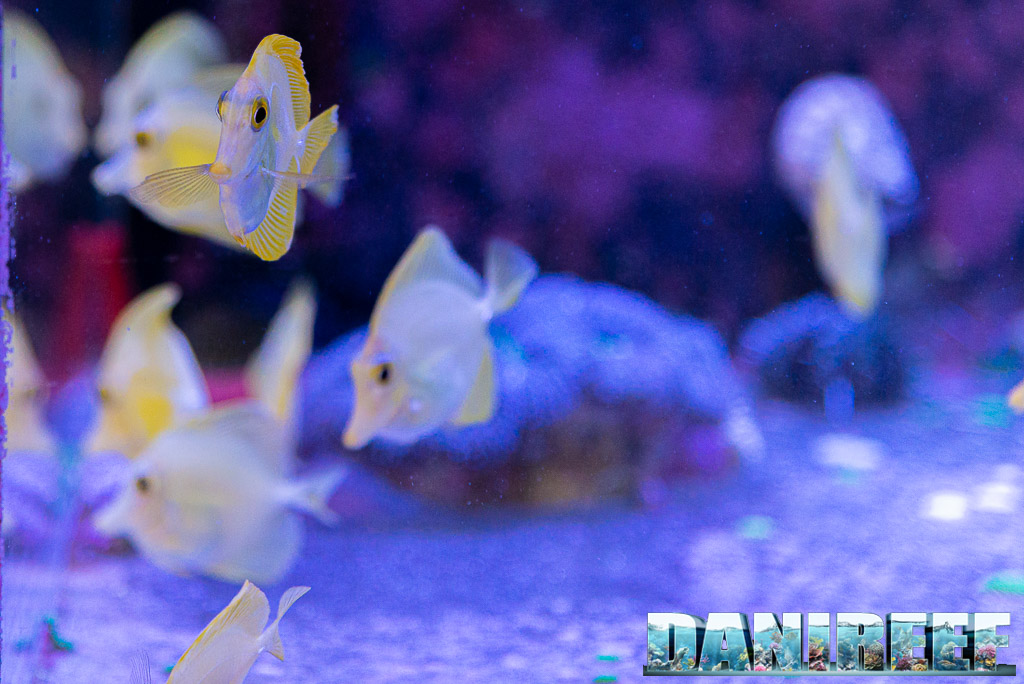
Here above you can see some young specimens in their growth aquarium. A real show to watch. Also, their price now is extremely high given the ban on fish from Hawaii.
But we also remember with pleasure the beautiful farmed Chromis viridis, a quite unique case worldwide. We saw, filmed them, and once again we are speechless. We wouldn’t have believed that it would be possible to farm them. Beautiful.
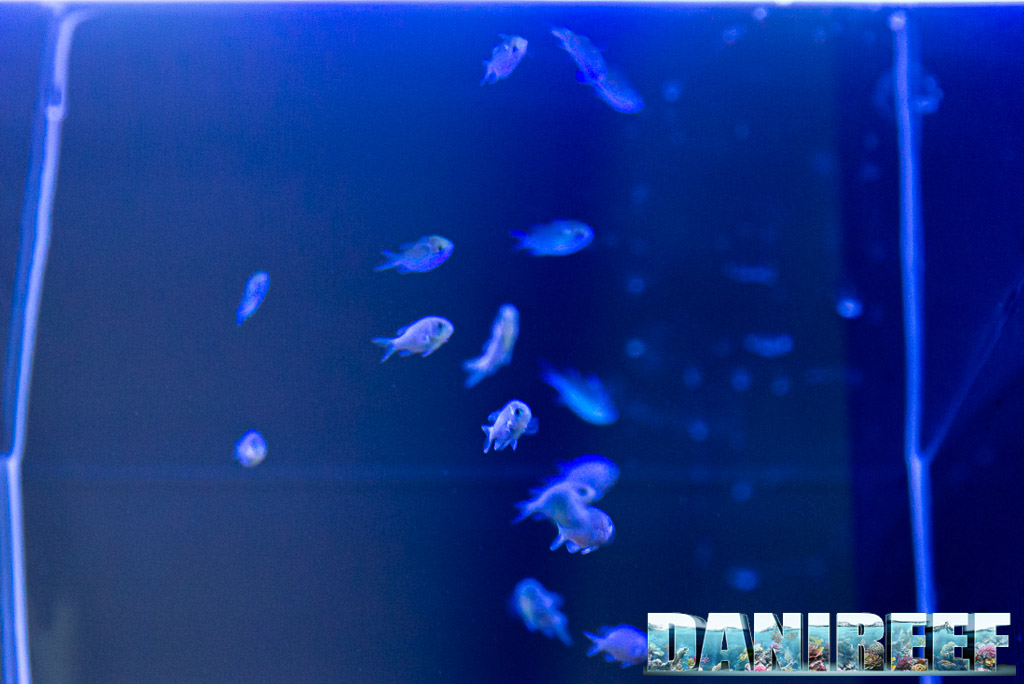
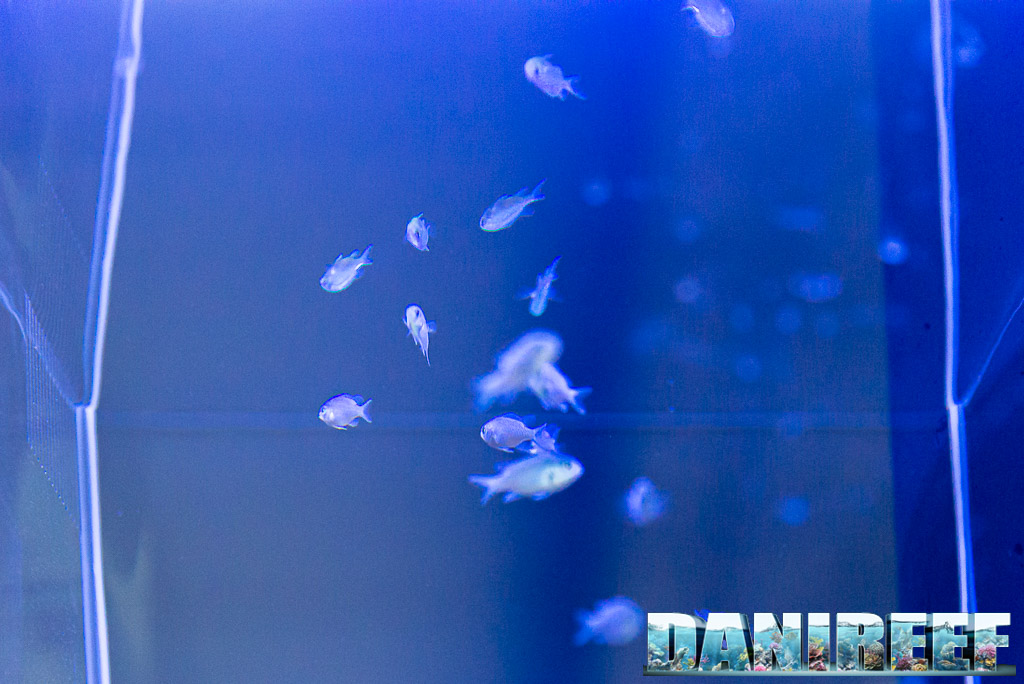
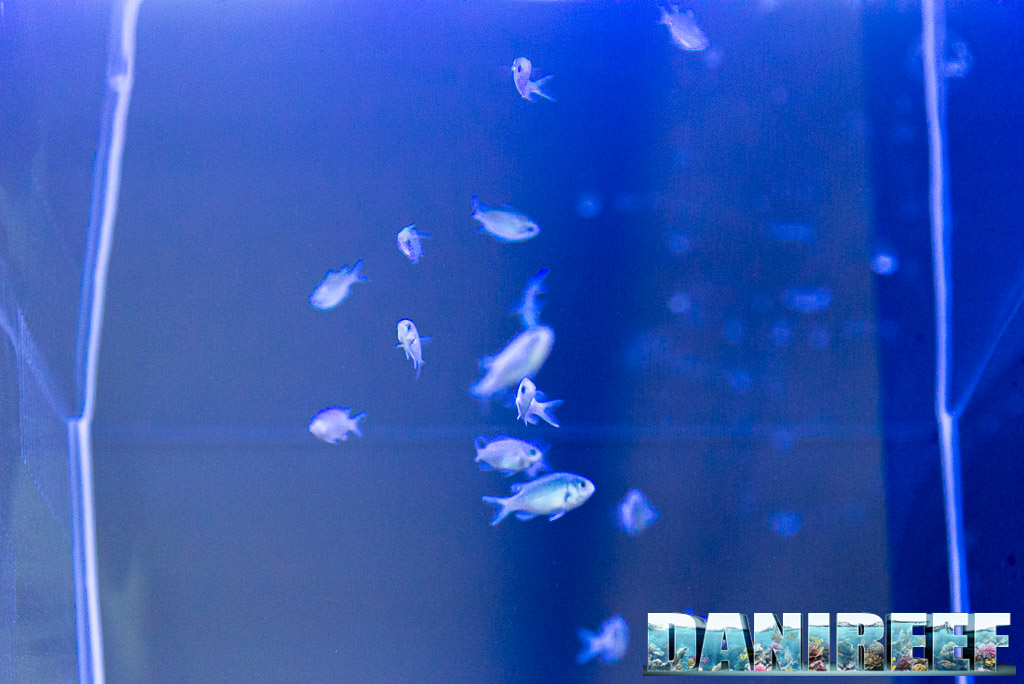
Other present farmed fish were different Pomacanthidae, Centropyge, Synchiropus, Pseudochromis, Pterapogon Kauderni, Opistognathus, Acreichthys, Pseudanthias, Gramma, Amphiprion of all kinds, Premano, various Chaetodontidi, Pygoplites, Apolemichthys, Zebrasoma, Eviota, Siganus, Neopomacentrus, Symphorichthy, Amblygobius, Koumansetta, Meiacanthus, Calloplesiops, Meiacanthus, Eviota, Trimma, Elacatinus, Stonogobiops, Elacatinus, Cryptocentrus, Gobiodon. In addiction to various Lysmata.
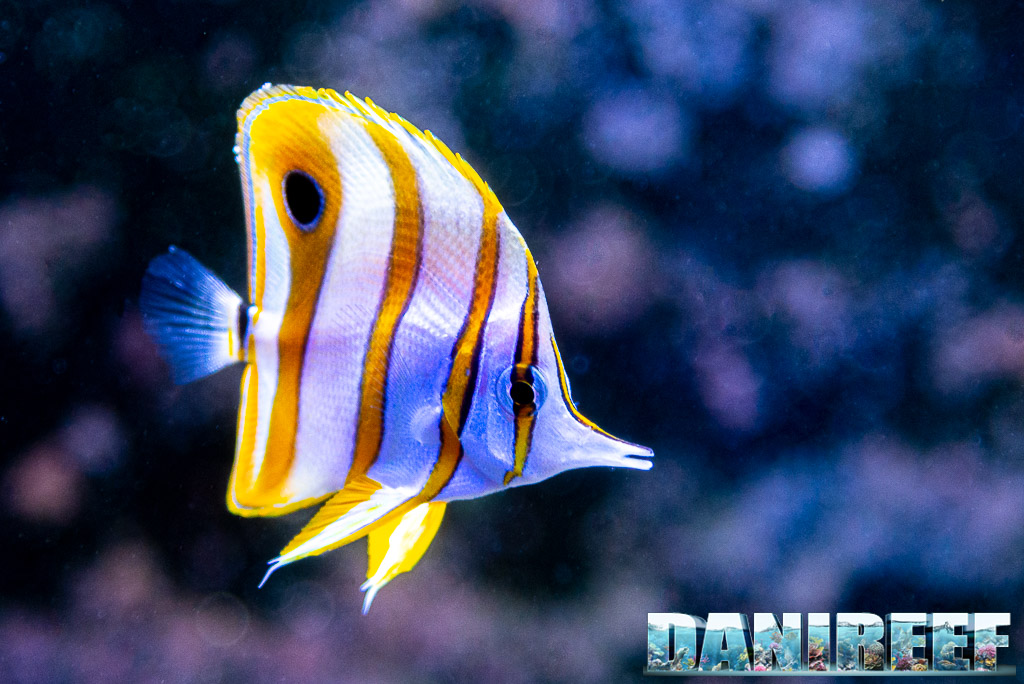
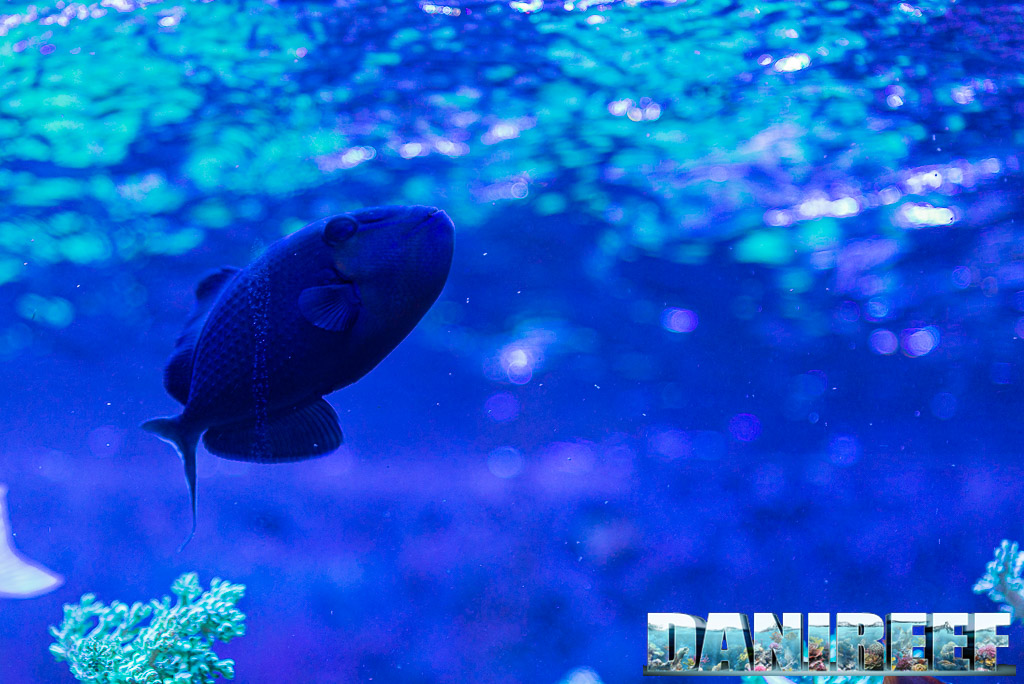
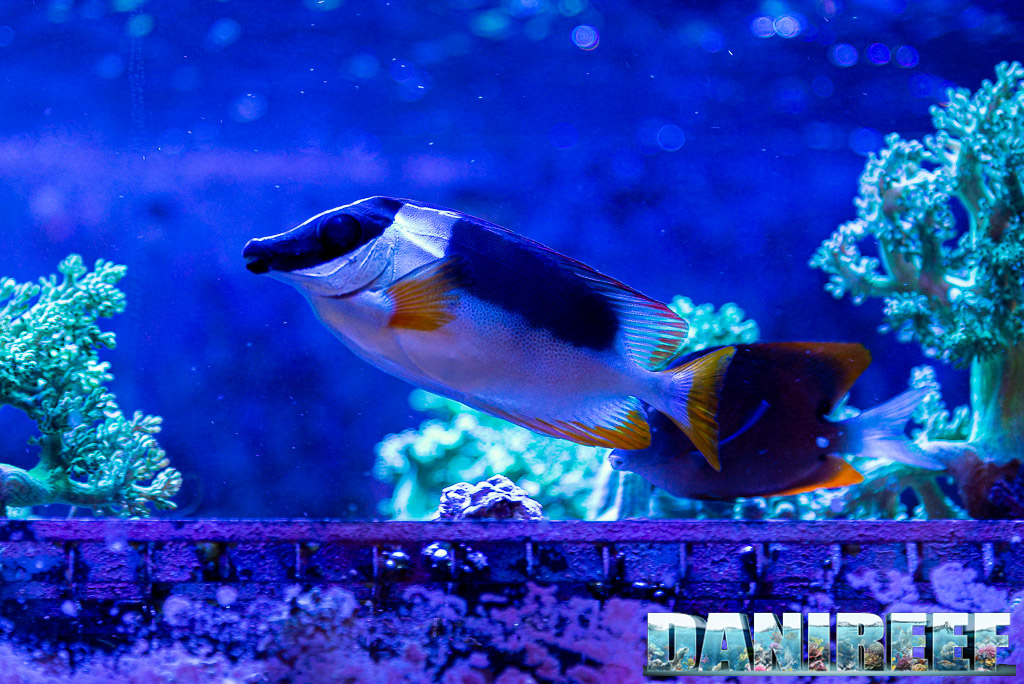
The technical part
We already talked about the values kept in the aquarium, but seeing the technical system was enlighting. The technical room was again very clean, it had enormous plastic sumps with Bubble King 500 and 400 skimmers, sulfur denitrators, algae filters, and roller filters. The Calcium and the carbonates were managed by Calcium reactors. There were also some products that increased nitrates and phosphates through dosometric pumps.
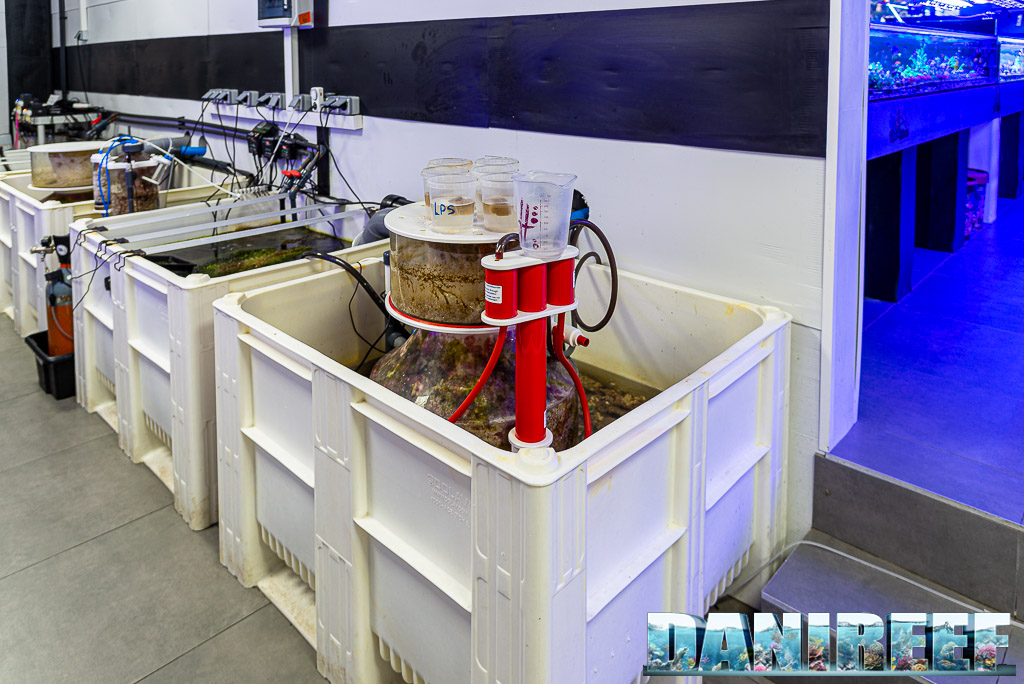
And many living rocks inside the sumps. Moreover, biological filtration doesn’t happen in aquariums with frags, so you have to put the biological part somewhere.
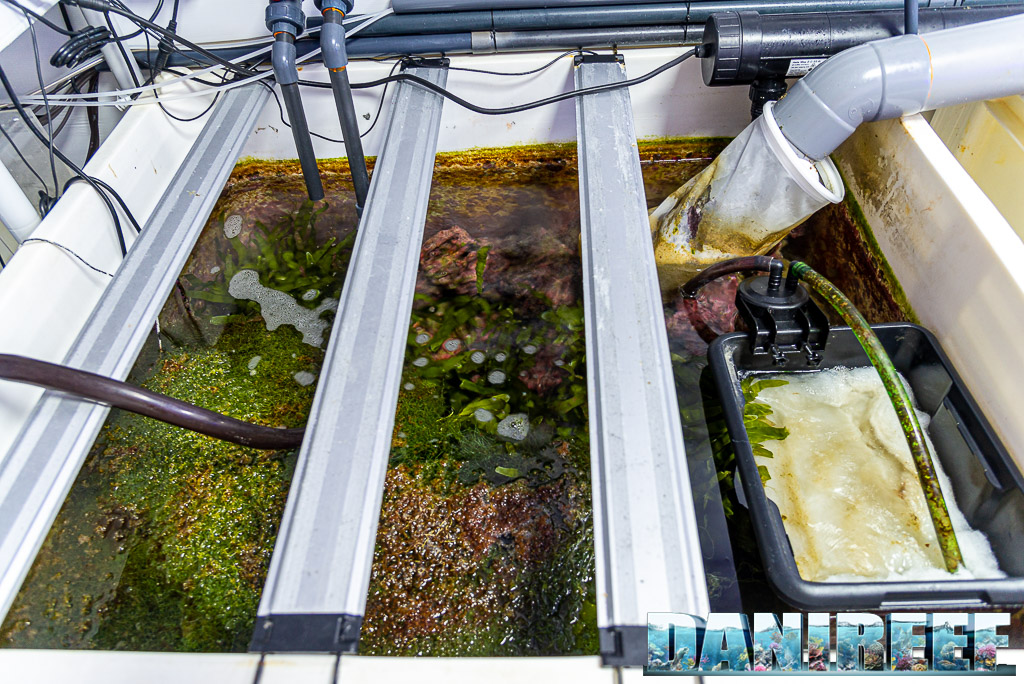
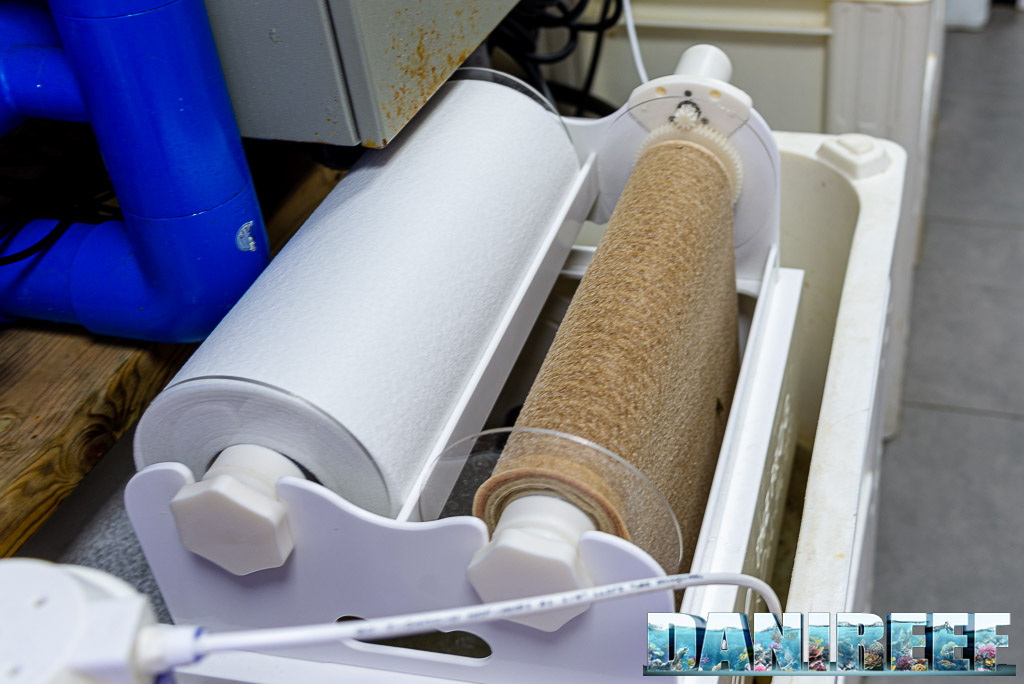
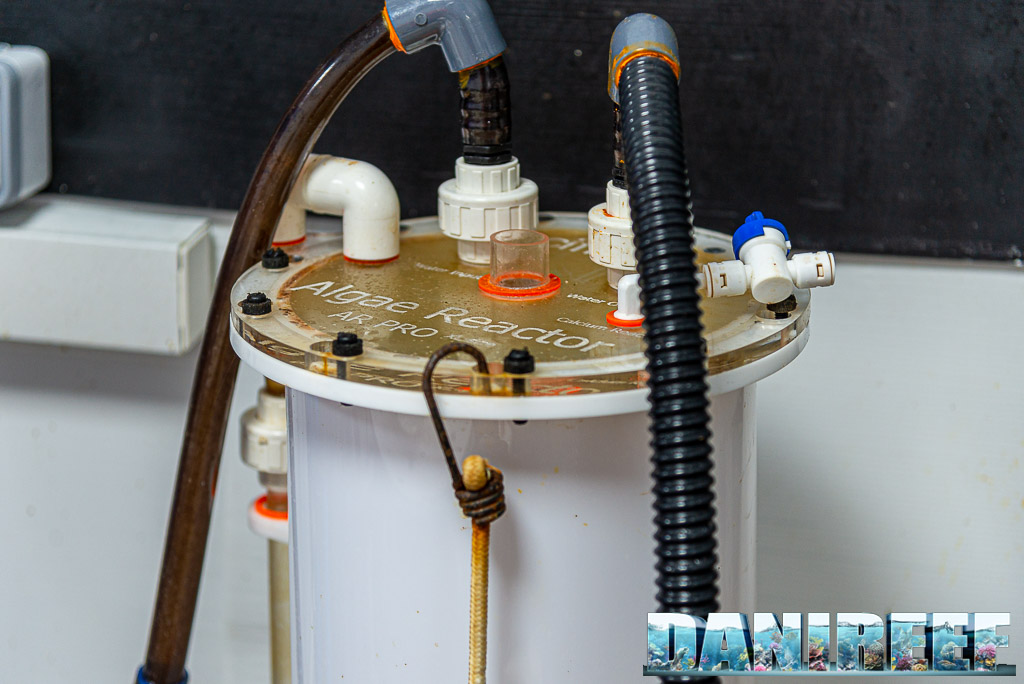
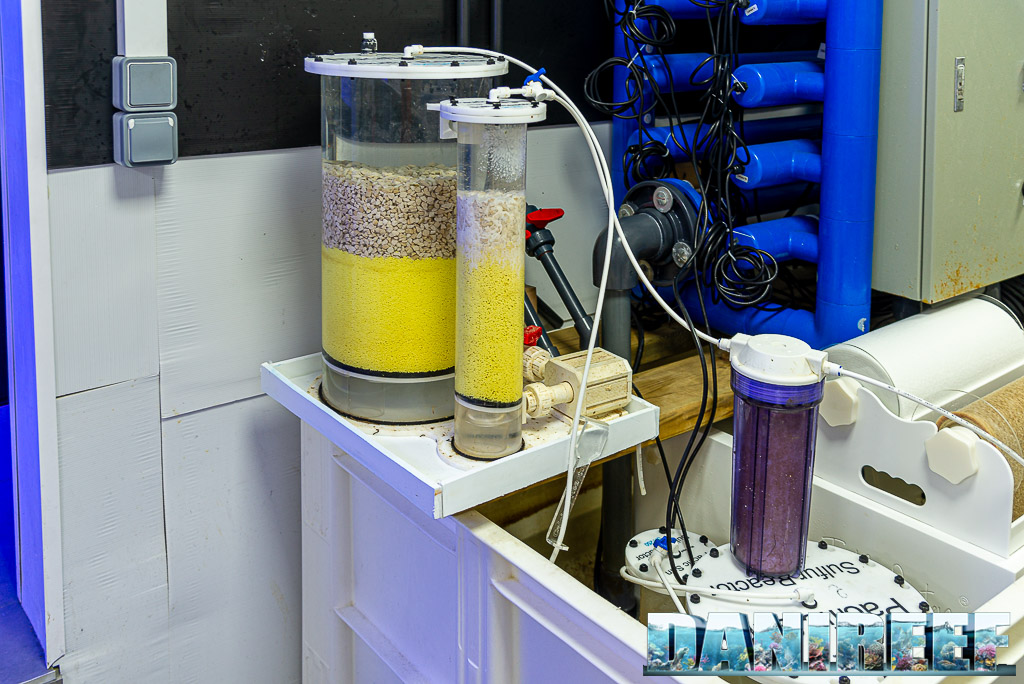
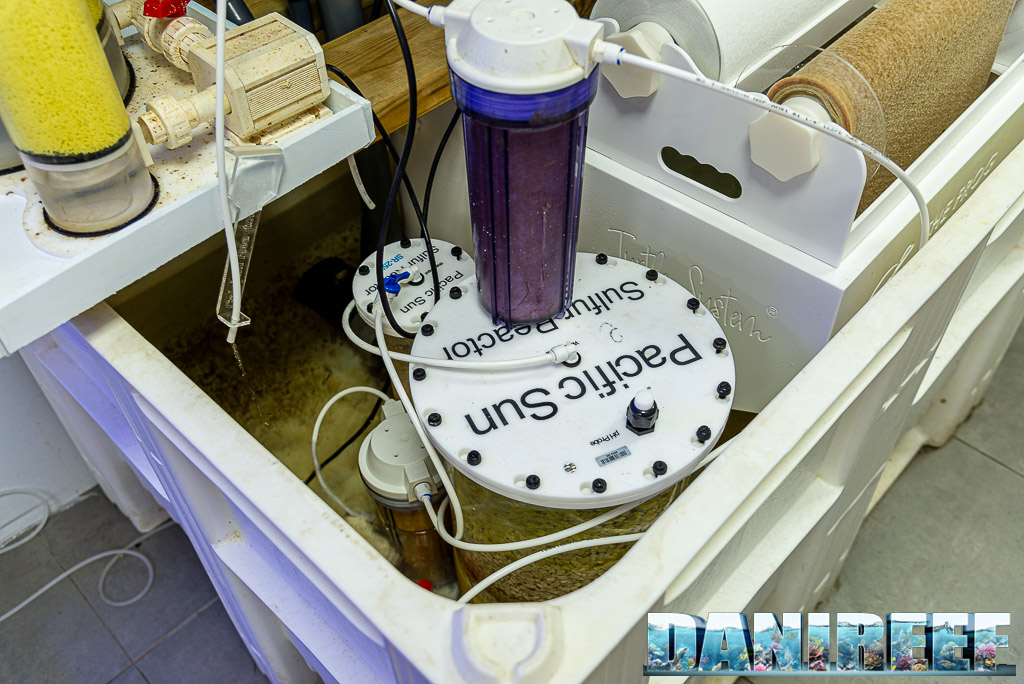
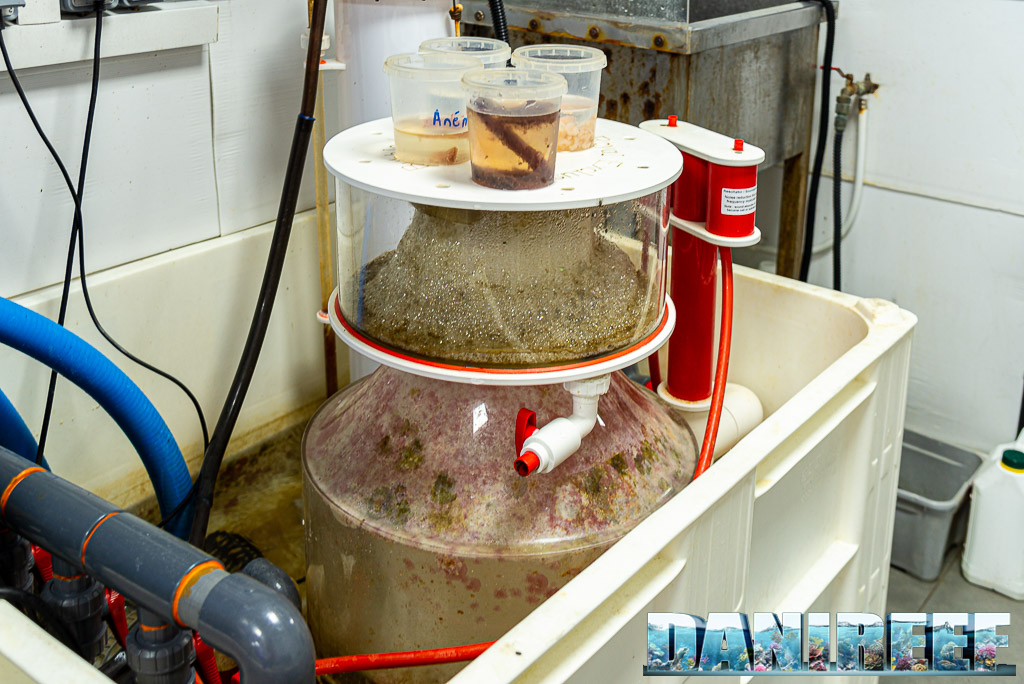
There were many UV lamps in fish structures, as is obvious.
And for the corals, the main part of the lighting is taken care of by the lamps on their tanks, and there are different ones, some not so well known here in Italy. The most important are the Evergrow, they’re 60 ceiling lights in total!
- 33 x Evergrow (un mix di it5060, it5080, it5012)
- 1 x Radion XR30 G5
- 2 x Kessil A500X
- 7 x Reefled 90
- 6 x Lumivie SEALIGHT
- 3 x T5 2x80watts t5ho Philips Superplants
- 5 x Maxspect jump 65
- 1 x Rsx 300 Maxspect
- 2 x Hydra 52 HD
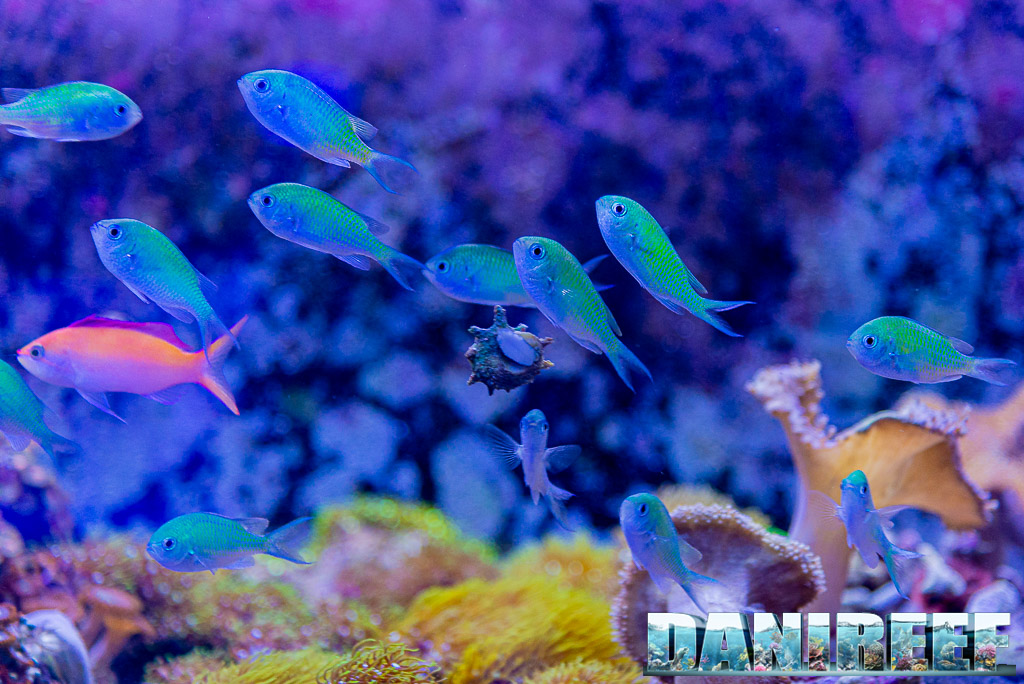
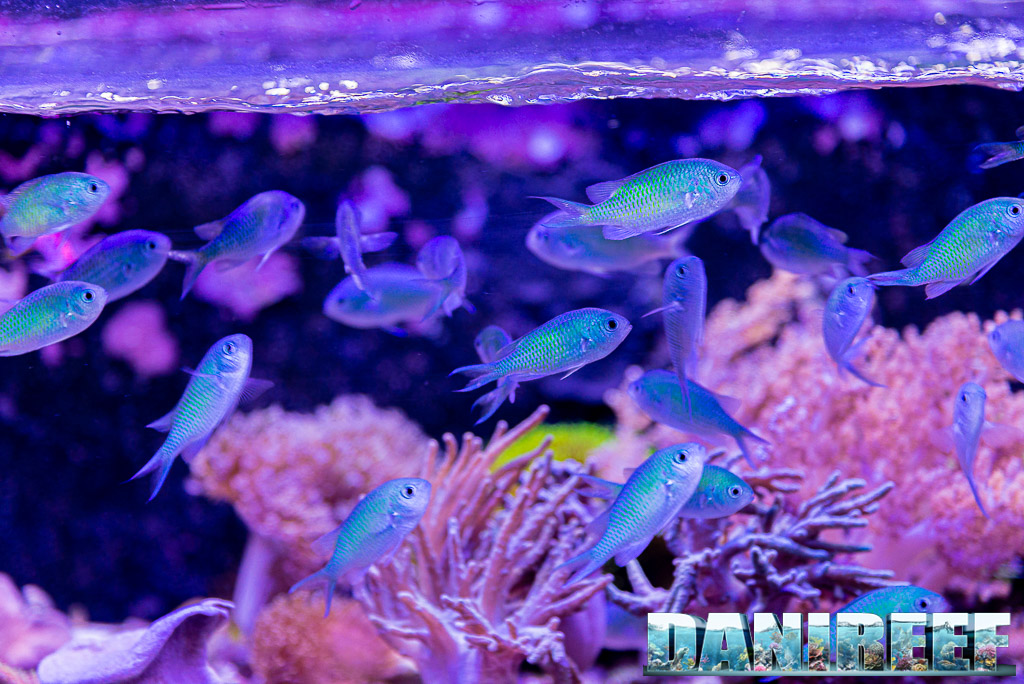
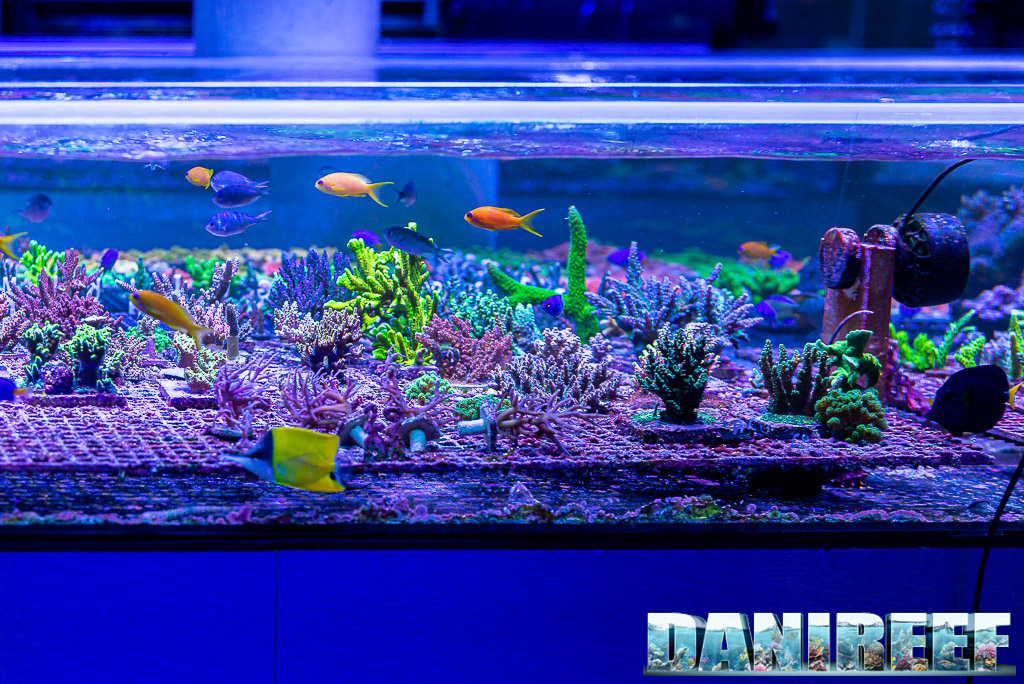
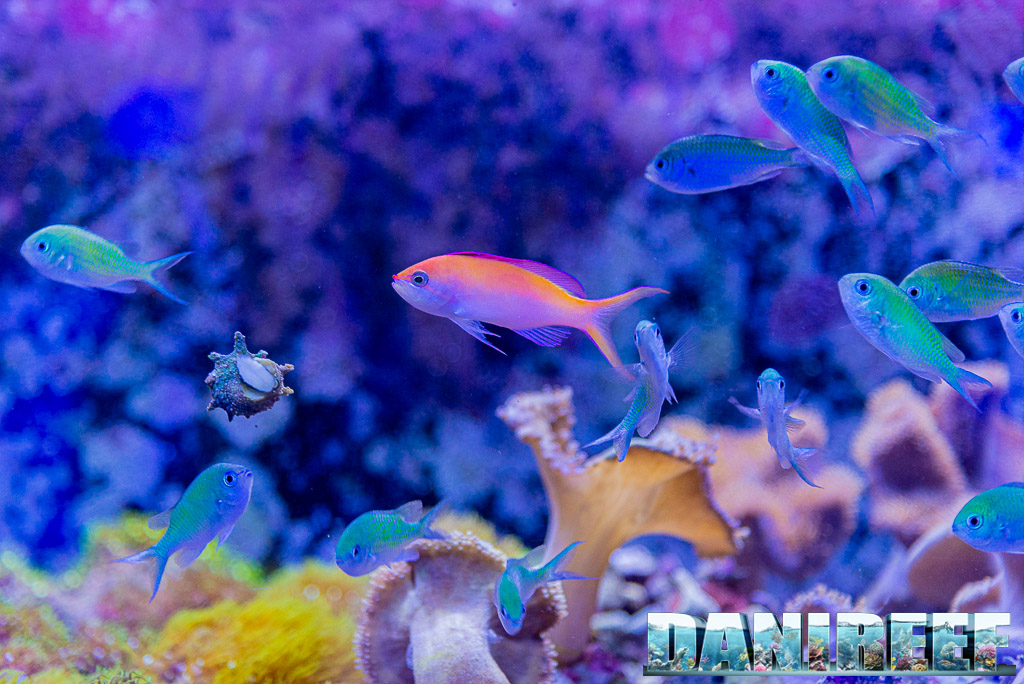
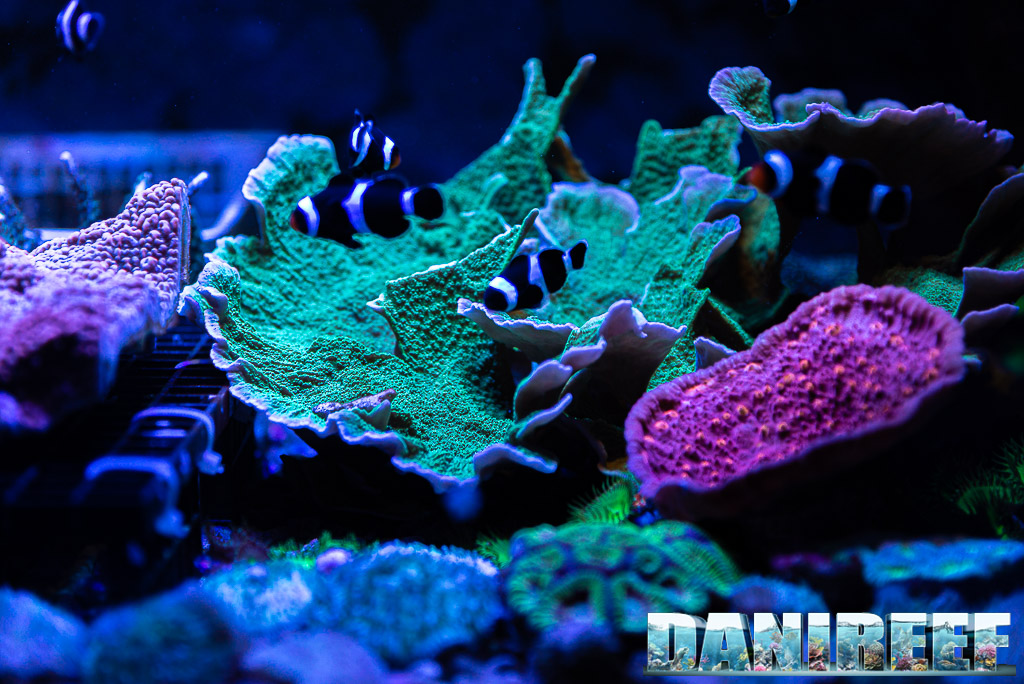
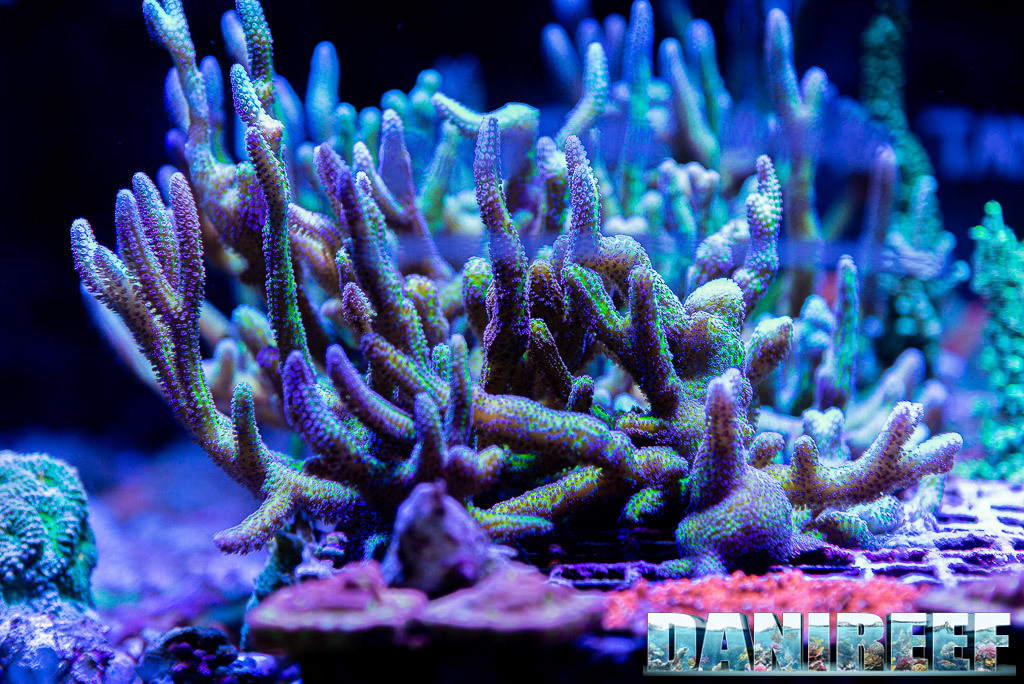
Curiosities
Recifathome was born 12 years ago, after the birth of DaniReef in 2007, and it changed its own structure many times. The starting point was the garage of Mehdi Thabet‘s grandmother, which was so low that Boris usually hit his head, they said.
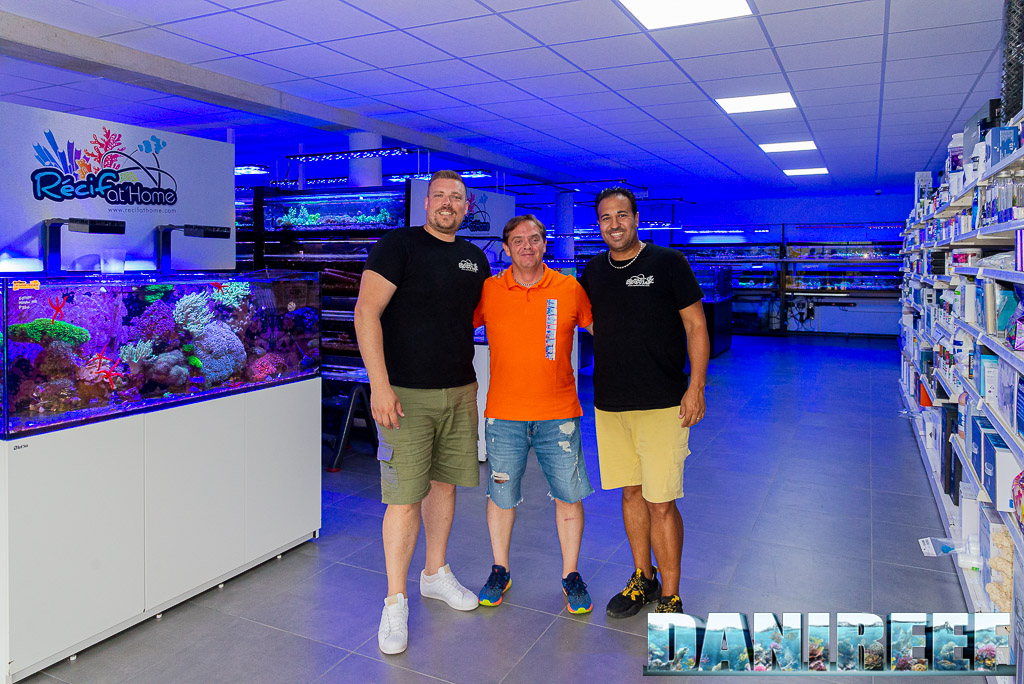
We tried our best to tell you about this fantastic store and its treasures, and we’ll do even better in the next page, where we collected the photographs of the corals, each one with its name. A considerable effort that we hope you’ll find useful for the identification of your corals!
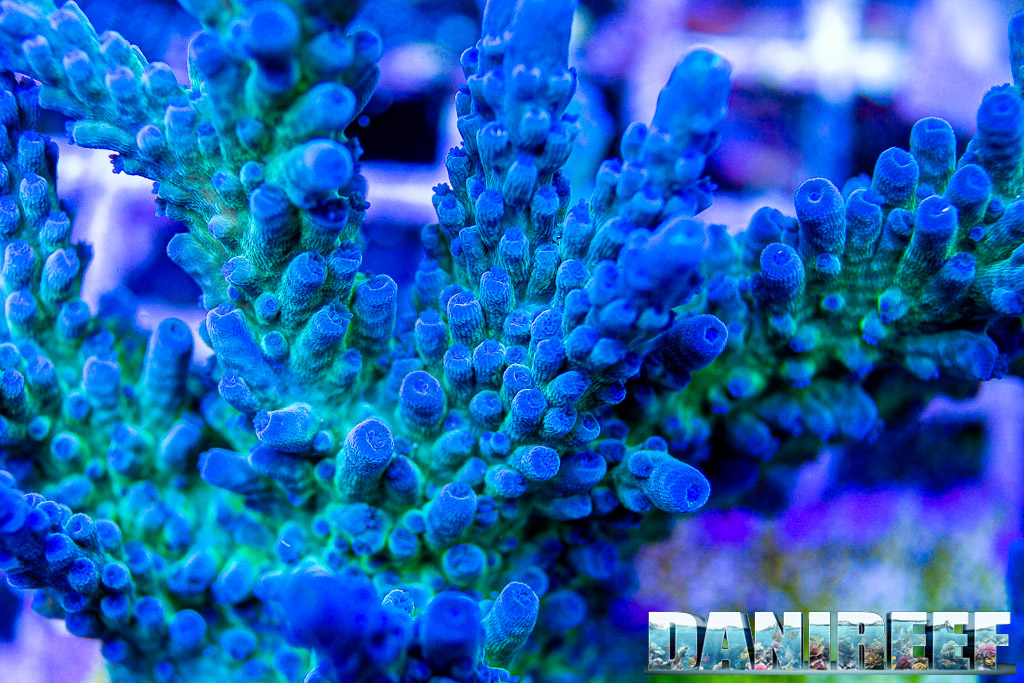
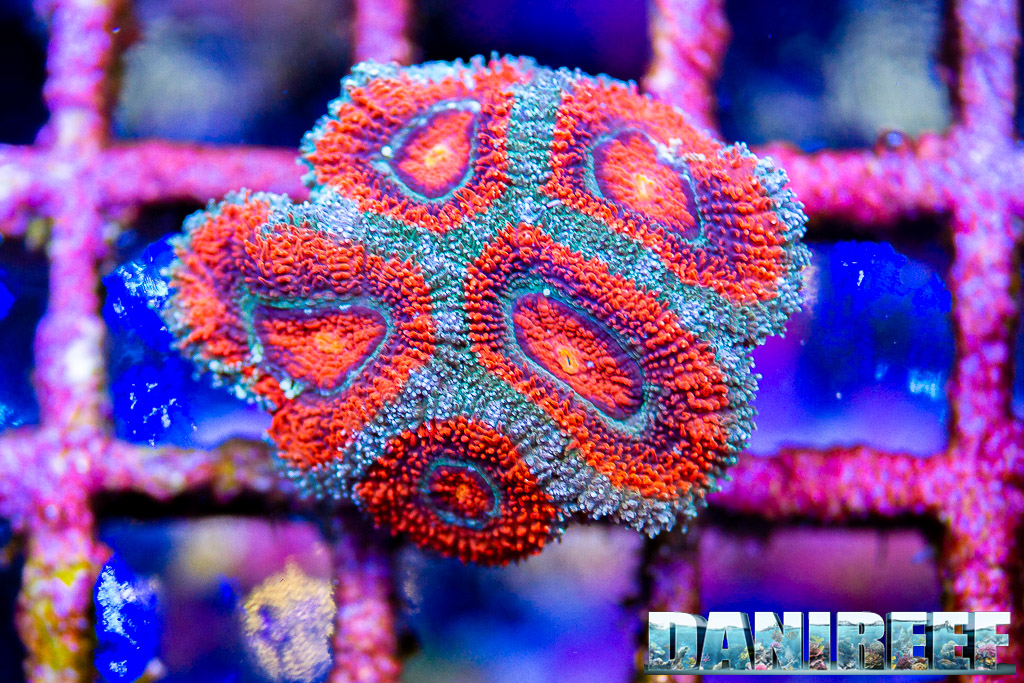
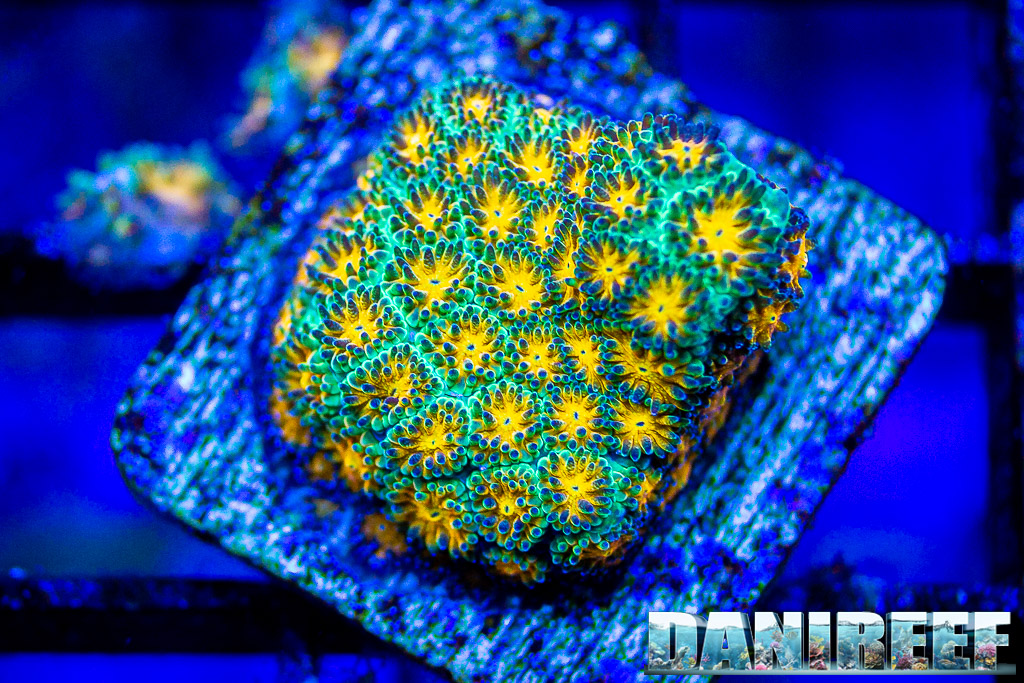
The pictures of corals and fish are on page two. We know you’ll surely find something to admire! And if you want to visit Recifathome‘s official website just click here.












